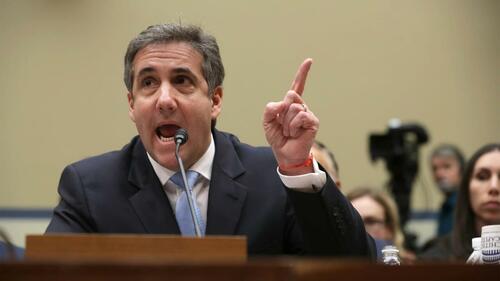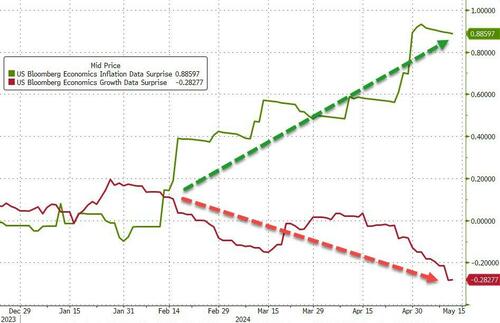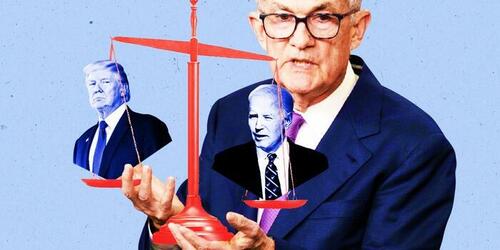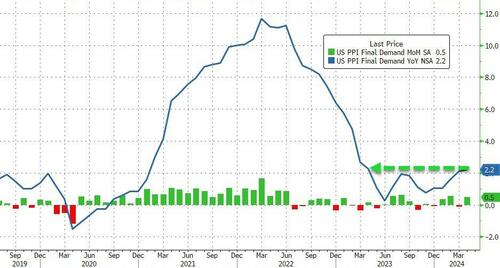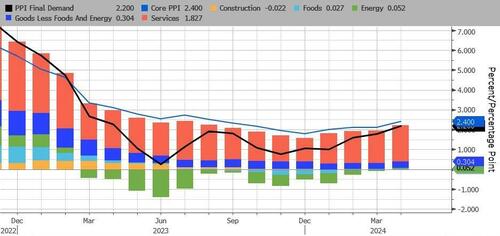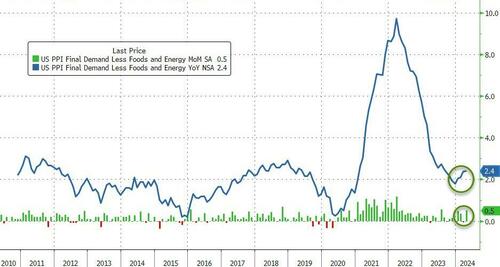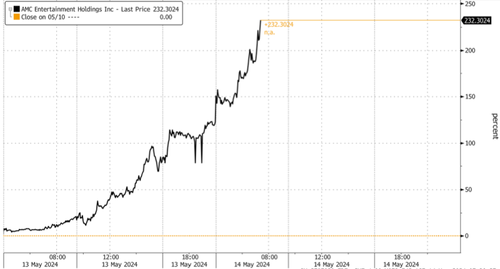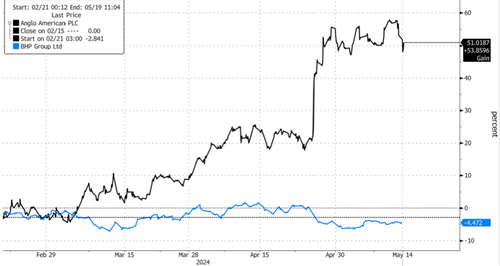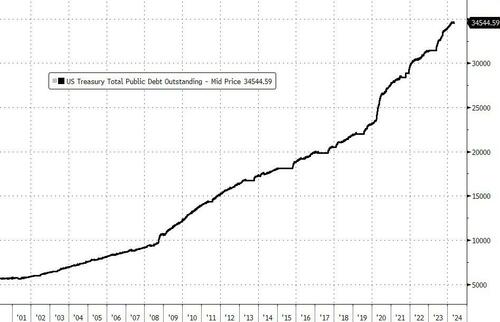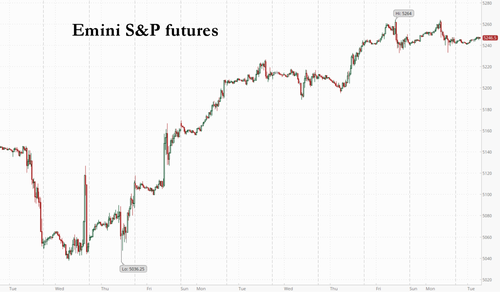Evil too, will always be part of the mystery of the Church. And when we see what men, what the clergy have done in the Church, then that is nothing short of proof that he [Christ] founded and upholds the Church. If she were dependent on men, she would long since have perished.
Distinction Matter - Subscribed Feeds
-
Site: southern ordersThe Prisoner Trailer:A Cardinal is arrested for treason against a communist state. As a Prince of the Catholic Church, he’s a popular hero of this people for his resistance against the Nazis during World War II, and now his resistance after his country again fell to another totalitarian conqueror. In prison, his interrogator is determined to get a confession of guilt from the strong-willed man, and thus destroy his power over his people. The verbal and psychological battles are gripping and powerful, not even the increasing pressures put upon the Cardinal can force him to weaken, no even solitary confinement, continuous blazing light in his cell, sleeplessness, efforts to persuade him he is going mad. and yet, in the deepening conflict the superbly indomitable prisoner creates a tremendous pity on his tormentor.
WATCH THE ENTIRE 1955 MOVIE, THE PRISONER, HERE.
-
Site: RT - News
The couple’s foundation could face fines or a suspension from the registry
Prince Harry and Meghan Markle could face fines and see their charity foundation suspended after it was found “delinquent” by US authorities, it was reported on Tuesday.
A notice sent by California’s Department of Justice on May 3 said the Archewell foundation is “listed as delinquent” for “failing to submit required annual report(s) and/or renewal fees.”
According to US authorities, state records show that the foundation’s last renewal was in May 2023 and that it has officially been marked delinquent, meaning the charity cannot raise money.
“An organization that is listed as delinquent is not in good standing and is prohibited from engaging in conduct for which registration is required, including soliciting or disbursing charitable funds,” the letter from California’s Registry of Charities and Fundraisers warned. The foundation’s registration may be “suspended or revoked,” the document added.
The couple insisted all the charity documents were filed on time, but that the required check was lost in the mail and has since been resubmitted, the BBC reported, citing a source close to Archewell.
“A new check has been mailed and we anticipate that this will be quickly resolved and reflected in records within seven business days,” the source noted.
Read more MMA star Khabib has accounts blocked over $3 million tax debt – media
MMA star Khabib has accounts blocked over $3 million tax debt – media
News of the filing came as the Duke and Duchess of Sussex spent three days in Nigeria, where they were seen visiting schools, playing sports, and announcing an expansion of charitable partnerships.
The Archewell Foundation charity was established by Prince Harry and his wife Meghan, and was named in honor of their son Archie, now aged five. It has backed projects ranging from helping Afghan women in the US to tackling misinformation.
Other funded projects included $200,000 for a “gender justice” project in Washington, $125,000 for a civil-rights charity, and $100,000 for a project promoting responsible use of technology, the BBC said, citing Archewell’s financial filings.
The couple launched the charity in 2020 after they stepped down from their duties as senior members of the royal family and left London for Los Angeles.
The foundation says its mission is to “show up, do good,” adding: “We meet the moment by showing up, taking action and using our unparalleled spotlight to uplift and unite communities – local and global – through acts of service and compassion.”
-
Site: RT - News
The couple’s foundation could face fines or a suspension from the registry
Prince Harry and Meghan Markle could face fines and see their charity foundation suspended after it was found “delinquent” by US authorities, it was reported on Tuesday.
A notice sent by California’s Department of Justice on May 3 said the Archewell foundation is “listed as delinquent” for “failing to submit required annual report(s) and/or renewal fees.”
According to US authorities, state records show that the foundation’s last renewal was in May 2023 and that it has officially been marked delinquent, meaning the charity cannot raise money.
“An organization that is listed as delinquent is not in good standing and is prohibited from engaging in conduct for which registration is required, including soliciting or disbursing charitable funds,” the letter from California’s Registry of Charities and Fundraisers warned. The foundation’s registration may be “suspended or revoked,” the document added.
The couple insisted all the charity documents were filed on time, but that the required check was lost in the mail and has since been resubmitted, the BBC reported, citing a source close to Archewell.
“A new check has been mailed and we anticipate that this will be quickly resolved and reflected in records within seven business days,” the source noted.
Read more MMA star Khabib has accounts blocked over $3 million tax debt – media
MMA star Khabib has accounts blocked over $3 million tax debt – media
News of the filing came as the Duke and Duchess of Sussex spent three days in Nigeria, where they were seen visiting schools, playing sports, and announcing an expansion of charitable partnerships.
The Archewell Foundation charity was established by Prince Harry and his wife Meghan, and was named in honor of their son Archie, now aged five. It has backed projects ranging from helping Afghan women in the US to tackling misinformation.
Other funded projects included $200,000 for a “gender justice” project in Washington, $125,000 for a civil-rights charity, and $100,000 for a project promoting responsible use of technology, the BBC said, citing Archewell’s financial filings.
The couple launched the charity in 2020 after they stepped down from their duties as senior members of the royal family and left London for Los Angeles.
The foundation says its mission is to “show up, do good,” adding: “We meet the moment by showing up, taking action and using our unparalleled spotlight to uplift and unite communities – local and global – through acts of service and compassion.”
-
Site: Zero HedgeUnfixable: Michael Cohen Faces Reckoning Of Biblical Proportions On Cross ExaminationTyler Durden Tue, 05/14/2024 - 10:05
Below is my column in the New York Post on the first day of the examination of Michael Cohen. He is expected to start his cross examination today. How bad will it be? After lying to Congress, courts, banks, and most everyone else, it will be bad. Years ago, Cohen threatened a journalist and told him “what I’m going to do to you is going to be f—ing disgusting.” Well, that bad. On cross examination, Cohen faces a reckoning of biblical proportions.
Michael Cohen apparently wants a reality show but, if his testimony Monday is any indication, reality is about to sink in for not just Cohen but the prosecutors and the court.
In stoking interest in his own appearance, the former Trump counsel promised the public that they should be “prepared to be surprised.”
Thus far, however, Cohen has offered nothing new and, more importantly, nothing to make the case for Manhattan District Attorney Alvin Bragg.
Just before he took the stand, the New York Post revealed that Cohen has been peddling a reality show called “The Fixer,” including working with Colin Whelan, who helped create “Joe Exotic: Tigers, Lies and Cover-Up.” Whelan appears interested to stay within that genre.
The Cohen pitch came with a cheesy promo video where he promised viewers, “I am your fixer.”
His first post-Trump client, Bragg, may have to disagree.
Cohen had only one advantage for Bragg: His notoriously flexible morals and ethics, which allows him to say most anything to support his sponsors.
With the prosecution’s case almost over, Bragg needed Cohen to clearly state that Trump intentionally committed fraud to conceal some still poorly defined crime.
The problem is that Cohen only confirmed that Trump knew he was going to pay for the nondisclosure agreement and that it would be buried before the election. None of that is unlawful.
On his reality show promo, Cohen tells viewers that he is now there to fix their problems because “the little guy doesn’t usually have access to people with my particular set of skills.”
Those skills seem to have escaped all of the witnesses who were compelled to work with him.
Witnesses detailed how Cohen was ridiculed as someone “prone to exaggeration” and unprofessional.
Former Trump associate Hope Hicks said that Cohen was constantly trying to insinuate himself into the campaign and that he “used to like to call himself Mister Fix It, but it was only because he first broke it.”
Cohen only succeeded in confirming that he put together this payment and advised Trump to go forward with it.
He assured him that it would effectively kill the story before the election.
None of that is illegal. The “Fix it man” assured Trump that he fixed it and now wants Trump to go to jail for following that advice.
In the course of that representation, Cohen also admitted to taping his client without his knowledge, a breathtaking breach of trust and confidentiality.
This is the man who, according to Stormy Daniels’ attorney, Keith Davidson, expected to be Trump’s Attorney General.
Davidson said that Cohen was “depressed and despondent” and “I thought he was going to kill himself” when he realized that he would not be made a cabinet member.
Cohen contradicted Davidson and insisted that he only wanted to be Trump’s personal lawyer.
He also admitted that he was unaware that the publisher of National Enquirer, David Pecker, had long killed negative stories about Trump and other celebrities for decades.
Cohen has yet to fix the problem for Bragg.
More importantly, he has added to the problem for Judge Juan Merchan. Many of us have ridiculed this case as devoid of any criminal act.
Indeed, Merchan has allowed the prosecutors to proceed without clearly stating what crime was being concealed.
It is not even clear why paying one’s lawyer a lump sum for his services and costs (including the NDA payment) was not a “legal expense” or how it was supposed to be entered on a business ledger.
Absent a sudden epiphany in his final testimony on Tuesday, Merchan should rule in favor of a directed verdict — that is, throwing the case out before it goes to a jury. If he instead sends this farcical case to the jury, it is Merchan, not Cohen, who may have a better claim to a reality show as the ultimate “Fixer.”
-
Site: RT - News
A London court has charged three people with assisting an unnamed foreign intelligence service
Officials in Hong Kong and China have strongly denied claims of spying in Britain after a London court charged three men with assisting a foreign intelligence service on Monday.
Speaking to reporters on Tuesday, Hong Kong Chief Executive John Lee condemned the charges and called for the British authorities to provide full information about the arrests.
“Any attempt to make unwarranted allegations against the Hong Kong government is unacceptable,” Lee said at a regular press briefing, as quoted by Bloomberg.
Lee also appealed for fair treatment for one of the suspects who works for Hong Kong’s trade outpost in London.
The defendant, Bill Yuen Chung-biu, is the office manager of the Hong Kong Economic and Trade Office in London. The other suspects are Peter Wai, a dual British and Chinese national, who is a UK Border Force officer, and Matthew Trickett, a private investigator and former Royal Marine commando.
Read more UK MPs blame China for MOD data breach – media
UK MPs blame China for MOD data breach – media
The men were charged with assisting a foreign intelligence service between December 2023 and May 2024 by “agreeing to undertake information gathering, surveillance and acts of deception” in Britain, Reuters reported, citing the charges brought in court. The suspects face a maximum possible sentence of 14 years for each charge.
Hong Kong is a special administrative region of China and a former British colony. The Chinese embassy in the UK also issued a statement on Monday condemning what it described as the “UK’s malicious fabrication and unwarranted accusation” against Hong Kong.
“The UK has staged a series of accusations against China, including those on ‘China spies’ and cyber-attacks,” the statement said, insisting the accusations are “groundless and slanderous.” China has also urged the UK to “stop spreading the so-call[ed] ‘China threat theory’ and end “political manipulation” against the country.
Read more Germans arrested on suspicion of spying for China
Germans arrested on suspicion of spying for China
Last month, two British men were charged with spying for China and breaching the Official Secrets Act. According to police, Christopher Cash, a former parliamentary researcher, and Christopher Berry, a teacher, “obtained, collected, recorded, published, or communicated” information that was determined to either be, or potentially be, “directly or indirectly, useful to an enemy.”
US President Joe Biden’s administration has also repeatedly accused China of state-backed hacking and cybercrime. The Five Eyes intelligence alliance comprising Australia, Canada, New Zealand, the UK, and US previously accused Beijing of intellectual property theft and of using artificial intelligence for hacking and spying against the nations in the group.
Hong Kong operates 14 economic and trade offices around the world. Their aim is to advance the city’s economic interests and promote foreign investment in Hong Kong.
-
Site: Mises InstituteDo we need government to referee all of our property disputes? Throughout history, people have peacefully resolved disputes without the help of state authorities.
-
Site: Steyn OnlineProgramming note: Tomorrow, Wednesday, I'll be here for our midweek Clubland Q&A taking questions from Mark Steyn Club members live around the planet at 3pm North American Eastern - which is 8pm British Summer Time/9pm Central European. Hope you can
-
Site: Steyn OnlineThe Mark Steyn Club has just celebrated its seventh birthday, and I thank all those First Week Founding Members itching to sign up for an eighth year. We hope our First Fortnight Members will want to do the same. And, if you've yet to consider joining,
-
Site: Zero HedgeWatch Live: Will Fed Chair Powell Admit He Can Now See The 'Flation'?Tyler Durden Tue, 05/14/2024 - 09:55
Squeezed in between today's (hotter than expected) PPI and tomorrow's CPI, Fed Chair Jay Powell will join The ECB's Dutch Central Banker Klaus Knot at the annual general meeting of the Foreign Bankers' Association.
After PPI - and a wave of higher prices across various indicators - will Powell admit that he can now see the 'flation'?
...and if not, will he explain why he is so desperate to start cutting rates (before November?)...
Watch Powell speak live here (due to start at 10amET)... (FBA has blocked playback on all other sites except YouTube, so no embed: click on the image to link to the YouTube stream)...
-
Site: RT - News
Poland itself does not yet have the full system, President Andrzej Duda has said
Poland cannot give Ukraine any US-made Patriot missile systems because it does not have the full system for its own defense, Polish President Andrzej Duda reiterated on Tuesday. Kiev has been asking its Western backers to provide more long-range air defense systems to repel Russian strikes.
Poland has only just started receiving the first elements of the Patriot surface-to-air batteries that it ordered from the US seven years ago, Duda told Bloomberg at the Qatar Economic Forum in Doha. Warsaw is currently in the process of building its own defense shield, part of which will be formed by the Patriot, he added.
“It’s difficult to say right now if we could be providing Patriot systems to Ukraine because, as a matter of fact, we still do not have the system in Poland, we do not have it complete to provide for our own defense,” Duda stated.
Ukraine earlier received several Patriot launchers, each of which costs more than $1 billion, from the US, Germany, and the Netherlands. The Financial Times reported in April that Kiev was lobbying Poland, Spain and Romania for batteries to be donated.
Read more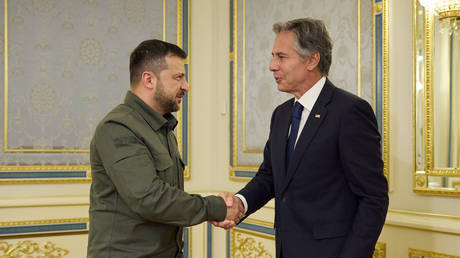 US promises new Ukraine weapons will be game changer – media
US promises new Ukraine weapons will be game changer – media
Both Duda and Polish Prime Minister Donald Tusk stated last month that Poland didn’t have any Patriot missile systems available to donate to Ukraine.
Germany and Spain recently agreed to send additional batteries to Kiev. Greece ruled out a donation, and Romanian Prime Minister Marcel Ciolacu said some members of his government were against the idea of sharing such weapons.
Poland has already donated $4 billion worth of weapons to Ukraine, including more than 300 battle tanks and Soviet-designed MiG 29 fighter jets, Duda said on Tuesday.
Poland is modernizing its armed forces, and it must replace what it donated to Ukraine, he added. Warsaw spends 4% of its GDP on defense, which is higher than NATO´s 2.5% target.
The Polish leader reiterated the claim that if Russia is allowed to win in Ukraine, it will keep attacking, and may target other neighboring countries. The Baltic states – Estonia, Latvia, and Lithuania – have increasingly voiced fears that they could be next. That would be “a huge threat to the whole world,” Duda said.
READ MORE: Anti-Russia campaign money stolen in NATO state – media
Moscow has repeatedly dismissed such claims, insisting it has no intention of attacking any NATO country. Russian President Vladimir Putin said in March that the idea that Moscow will attack some other country such as Poland, or the Baltic States was “complete nonsense” and “drivel.”
Moscow cited NATO’s expansion in Europe and its increasing presence in Ukraine as one of the key triggers of the current conflict.
-
Site: RT - News
Poland itself does not yet have the full system, President Andrzej Duda has said
Poland cannot give Ukraine any US-made Patriot missile systems because it does not have the full system for its own defense, Polish President Andrzej Duda reiterated on Tuesday. Kiev has been asking its Western backers to provide more long-range air defense systems to repel Russian strikes.
Poland has only just started receiving the first elements of the Patriot surface-to-air batteries that it ordered from the US seven years ago, Duda told Bloomberg at the Qatar Economic Forum in Doha. Warsaw is currently in the process of building its own defense shield, part of which will be formed by the Patriot, he added.
“It’s difficult to say right now if we could be providing Patriot systems to Ukraine because, as a matter of fact, we still do not have the system in Poland, we do not have it complete to provide for our own defense,” Duda stated.
Ukraine earlier received several Patriot launchers, each of which costs more than $1 billion, from the US, Germany, and the Netherlands. The Financial Times reported in April that Kiev was lobbying Poland, Spain and Romania for batteries to be donated.
Read more US promises new Ukraine weapons will be game changer – media
US promises new Ukraine weapons will be game changer – media
Both Duda and Polish Prime Minister Donald Tusk stated last month that Poland didn’t have any Patriot missile systems available to donate to Ukraine.
Germany and Spain recently agreed to send additional batteries to Kiev. Greece ruled out a donation, and Romanian Prime Minister Marcel Ciolacu said some members of his government were against the idea of sharing such weapons.
Poland has already donated $4 billion worth of weapons to Ukraine, including more than 300 battle tanks and Soviet-designed MiG 29 fighter jets, Duda said on Tuesday.
Poland is modernizing its armed forces, and it must replace what it donated to Ukraine, he added. Warsaw spends 4% of its GDP on defense, which is higher than NATO´s 2.5% target.
The Polish leader reiterated the claim that if Russia is allowed to win in Ukraine, it will keep attacking, and may target other neighboring countries. The Baltic states – Estonia, Latvia, and Lithuania – have increasingly voiced fears that they could be next. That would be “a huge threat to the whole world,” Duda said.
READ MORE: Anti-Russia campaign money stolen in NATO state – media
Moscow has repeatedly dismissed such claims, insisting it has no intention of attacking any NATO country. Russian President Vladimir Putin said in March that the idea that Moscow will attack some other country such as Poland, or the Baltic States was “complete nonsense” and “drivel.”
Moscow cited NATO’s expansion in Europe and its increasing presence in Ukraine as one of the key triggers of the current conflict.
-
Site: LifeNews
Abortion supporters nationwide make contradictory statements daily. Usually, it sounds something like this:
Life is valuable – except in the womb.
It’s ok to kill a preborn child up until nine months, but when it’s born, then it can’t be killed.
It’s a baby when they want it to be – otherwise, it’s a “fetus.”
It’s more startling and concerning when trained medical professionals not only accept contradictory statements such as these but go directly against the oaths they vowed to take. The heart of the Hippocratic Oath is to “abstain from all intentional wrong-doing and harm.”
Or, a similar phrase stated by Thomas Inman, says more descriptively, “Practice two things in your dealings with disease: either help or do not harm the patient.”
Some medical personnel threw away their morals, along with dignity for all patients – born and preborn. Illinois’ biggest pro-abortion lobbying group, “Personal PAC,” held a fundraiser in downtown Chicago in Dearborn for “Doctors for Choice.” Students for Life of America (SFLA) mobilized alongside the Pro-Life Action League of Illinois to protest the event and showcase to the community the horror of abortion.
Please follow LifeNews.com on Gab for the latest pro-life news and info, free from social media censorship.
With Illinois being one of the most pro-abortion states in the nation, this pro-abortion PAC needs public disapproval, not more funding. They have already wreaked havoc on life, having funded the Reproductive Health Act, which made abortion legal through nine months, and helped repeal the Parental Notification Act, which allows abortionists to perform abortions on minors without parental consent or notice. Not to mention, women from neighboring states travel through Illinois borders to obtain an abortion. With more funding, this PAC could do even more damage in Illinois.

“Chicagoans deserve to know what is happening in their city and how lives are legally being ended through abortion in their city and state,” stated Shawna Weber, SFLA’s upper Midwest regional coordinator. “Continued funding for abortions in this state is devastating news for everyone. When the abortionists get more money, they use it to end more lives and wreak more havoc on the pro-life movement in the state.”

“As a young pro-life activist, it is essential that we disrupt the corrupt abortion industry that does not care about women but wants to kill children,” says Sarah Carter, a recent graduate and an SFLA alumni at Wheaton College. “Healthcare is supposed to heal, not kill.”

We exposed Chicagoans to the messaging about what was happening inside Dearborn – death and destruction from doctors who are supposed to protect. While we received both positive and negative feedback, overall, we were able to mobilize with other pro-lifers on such a crucial issue for the state.
“Doctors for Choice” is an oxymoron. Women in Chicago, neighboring states, and nationwide deserve doctors who inform and take their oath to protect life seriously.
LifeNews Note: Jordan Estabrook graduated from the University of North Carolina at Charlotte and serves the Pro-Life Generation as a press specialist and online editor. She writes for the Students for Life blog.
The post Pro-Life Advocates Protest Event for Pro-Abortion “Doctors” appeared first on LifeNews.com.
-
Site: AsiaNews.itNetiporn "Bung" Sanesangkhom, 28, died in hospital after her conditions took a turn for the worse. She had become a symbol for international advocacy groups, cited as evidence of abuses in Western government reports. Nearly 2,000 people are being prosecuted for crimes of opinion, with hundreds facing heavy prison sentences.
-
Site: Zero HedgeUS Army Major Quits Intel Agency Over 'Unqualified' US Support Of Israeli 'Ethnic Cleansing'Tyler Durden Tue, 05/14/2024 - 09:40
A US Army officer has resigned from his post at the Defense Intelligence Agency (DIA) to protest Washington's "nearly unqualified support for the government of Israel" -- support that's facilitated "the killing and starvation of tens of thousands of innocent Palestinians." Mann describes himself as a "descendent of European Jews" who was raised to be "particularly unforgiving" where "responsibility for ethnic cleansing" is concerned.
When Major Harrison Mann left DIA in April, he sent a two-page letter to a group of his colleagues there, saying he felt they were owed an explanation for his "relatively abrupt departure." On Monday, Mann shared the letter with the public, via a post to his LinkedIn page.
 Army Major Harrison Mann condemned "unqualified" US government support of the State of Israel (LinkedIn)
Army Major Harrison Mann condemned "unqualified" US government support of the State of Israel (LinkedIn)
His post targets others in government who are feeling morally conflicted by performing duties that support the Israeli Defense Forces (IDF) rampage in Gaza. The apparent catalyst for going public now: the start of IDF attacks on the southern Gaza city of Rafah, where more than a million Palestinians have sought refuge after being forced to evacuate other areas of the 25-mile-long strip.
"I cannot justify staying silent any longer...It is clear that this week, some of you will still be asked to provide support -- directly or indirectly -- to the Israeli military as it conducts operations into Rafah and elsewhere in Gaza...I am sharing [my letter] now in the hope that you too will discover you are not alone, you are not voiceless, and you are not powerless.
In the April letter explaining his departure, Mann describes how his growing misgivings grew as the IDF's retaliation for the Oct. 7 Hamas invasion of southern Israel continued, with US government help:
"Each of us signed up to serve knowing we might have to support policies that we weren't fully convinced of. Our defense institutions couldn't function otherwise. However, at some point it became difficult to justify the outcomes of this particular policy. At some point -- whatever the justification -- you're either advancing a policy that enables the mass starvation of children, or you're not."
 A malnourished 6-year-old being treated at a field hospital in Rafah, Gaza (via Human Rights Watch)
A malnourished 6-year-old being treated at a field hospital in Rafah, Gaza (via Human Rights Watch)
In April, UNICEF said one in three Gaza children under two years old are acutely malnourished. When Israel began retaliating after Oct. 7, Defense Minister Yoav Gallant declared, "I have ordered a complete siege on the Gaza Strip. There will be no electricity, no food, no fuel, everything is closed. We are fighting human animals and we are acting accordingly."
Mann described how imagery emanating from Gaza made him feel increasingly guilty about the DIA's role in "directly execut[ing] policy" that supported the IDF-inflicted mass misery:
"The nearly unqualified support for the government of Israel...has enabled and empowered the killing and starvation of tens of thousands of innocent Palestinians...The past months have presented us with the most horrific and heartbreaking images imaginable -- sometimes playing on the news in our own spaces -- and I have been unable to ignore connection between those images and my duties here. This has caused me incredible shame and guilt."
 The IDF has unleashed mass destruction of civilian infrastructure, as seen here in the vicinity of Al-Shifa hospital (France24)
The IDF has unleashed mass destruction of civilian infrastructure, as seen here in the vicinity of Al-Shifa hospital (France24)
The William & Mary graduate said he'd hoped for a quick end to the war. As it continued, he tried to rationalize his continued service to the DIA and, by extension, the IDF:
I told myself my individual contribution was minimal, and that if I didn't do my job, someone else would, so why cause a stir for nothing? I told myself I don't make policy and it's not my place to question it. Above all, I was afraid. Afraid of violating our professional norms. Afraid of disappointing officers I respect. Afraid you would feel betrayed.
Mann said his resignation was ultimately sparked by "moral injury" -- a term that Syracuse University's Moral Injury Project defines as "damage done to one’s conscience or moral compass when that person perpetrates, witnesses, or fails to prevent acts that transgress one’s own moral beliefs, values, or ethical codes of conduct." Moral injury is considered to be one factor contributing to the high rate of suicide observed in military veterans.
Mann also explained how his upbringing affected his moral calculus:
"As the descendant of European Jews, I was raised in a particularly unforgiving moral environment when it came to the topic of bearing responsibility for ethnic cleansing — my grandfather refused to ever purchase products manufactured in Germany — where the paramount importance of ‘never again’ and the inadequacy of ‘just following orders’ were oft repeated.
I am haunted by the knowledge that I have failed those principles. But I also have hope that my grandfather would afford me some grace; that he would still be proud of me for stepping away from this war, however belatedly."
In addition to objecting to Israel's mass harm to civilians, Mann noted that "[America's] unconditional support also encourages reckless escalation that risks wider war.” Mann was originally commissioned as an infantry officer and later became a foreign area officer focused on the Middle East. Along the way, he earned a master of public administration degree from the Harvard Kennedy School.
 The Red Crescent said six Palestinians were killed when the IDF bombed this ambulance in January; Israel denied responsibility (ABC Australia)
The Red Crescent said six Palestinians were killed when the IDF bombed this ambulance in January; Israel denied responsibility (ABC Australia)
Mann's resignation-in-protest strikes us as much better and more effective choice than the one made by Air Force Airman Aaron Bushnell, who fatally self-immolated at the Israeli embassy in Washington. In another high-profile resignation, the State Department's Josh Paul in October quit his job in a role that supported arms transfers to Israel. Speaking at Amherst, he cited the lack of consideration for the consequences: “[There was] no interest in debating: Are the weapons that we are providing going to be used appropriately? … Should we be having conversations with the government of Israel about what they're doing?”
According to the latest estimates reported by the UN Office for the Coordination of Humanitarian Affairs, more than 34,000 Palestinians have died since Oct. 7. Of the identified dead, 32% are children and 20% are women. In April, Speaker of the House Mike Johnson collaborated with Senate Majority Leader Chuck Schumer to push through another $14.3 billion in aid to the State of Israel.
Mann said that after distributing his letter to his DIA colleagues in April, he received "an unexpected outpouring of support." As his protest now reaches a far larger audience, some may say this Army officer should have just kept following orders and serving as a cog in the empire's machine, keeping his concerns about America's unqualified support of Israel to himself. Safe to say that George Washington would think otherwise.
-
Site: LifeNews
Franciscan University of Steubenville on Saturday celebrated its 76th commencement exercises, sending out nearly 900 students who heard Catholic U.S. Supreme Court Justice Samuel Alito urge them to “go out boldly,” but also warn that the freedoms of speech and religion are seriously endangered in our current culture.
In his commencement address, Alito told the graduating class – which broke a record for the largest in the school’s history for a fourth consecutive year – to leave Franciscan ready to “engage the world,” while still acknowledging that it’s “rough out there,” and “probably rougher … now that it has been for quite some time.”
Franciscan University President Fr. Dave Pivonka, TOR ’89, introduced Alito, who received an honorary doctorate in Christian ethics “for his decades of exemplary public service and tireless efforts to protect and uphold justice and the rule of law.”
Pivonka first cited the associate justice’s majority opinion in Burwell v. Hobby Lobby (2014), which upheld religious freedom. A lengthy standing ovation for Alito erupted next when Pivonka cited his majority opinion in Dobbs v. Jackson Women’s Health Organization (2022), which held the United States Constitution does not confer a right to abortion.
During his address, the Supreme Court justice focused primarily on the Constitution, referring to it as “the source that has formed the backbone of my work as a judge for the past 30 years.”
Please follow LifeNews.com on Gab for the latest pro-life news and info, free from social media censorship.
“I believe that our Constitution could not have endured, and could not have provided the framework for our country’s growth, if it did not rest on a deep understanding of human nature and human behavior,” he said.
He highlighted some of the lessons “the Constitution teaches us” – lessons that apply to everyday life. The first of these, he noted, is “the need to be rigorous and disciplined in identifying the things that are most fundamental.”
“A striking feature of our Constitution is its brevity … our Constitution is brief because it focuses on the things that are essential,” the associate justice observed:
It sets out the structure of the government, it protects basic rights and then it leaves just about everything else to be decided by the American people acting through their elected representatives …The framers’ strategy, a disciplined identification of what is fundamental has served our country well. And this same strategy is a good one to implement in our personal lives … we can make the effort to keep in mind what is fundamental and permanent in our lives. And that is absolutely critical. Because the things that call out most loudly for our attention on a daily basis are not necessarily the things that matter most in the end.
Another lesson taught by the Constitution, Alito said, “is that it guards against improvident change.”
“The constitution is exceedingly hard to change,” he explained:
An amendment must be approved by two-thirds of both houses of Congress and it must be ratified by three-quarters of the states. And because the amendment process is so difficult, our Constitution has been amended only 27 times this date, despite the fact that more than 10,000 proposed amendments have been considered in Congress.
Alito elaborated that the framers “deliberately” made the process of amending the Constitution strenuous because of their “understanding of the nature of the fundamental rights that are protected by the Constitution.”
He continued:
I’m sure we all remember the famous words of the Declaration of Independence, “all men are created equal,” and “they are endowed by their Creator with certain unalienable rights.” That short and famous statement speaks volumes and one of the most important things it says is that there are certain moral principles that are true and immutable. These principles of right and wrong are not relative or circumstantial. They are not of our making, and it is not within our power to change them.
Alito added that the Constitution’s framers anticipated there would be times “when rulers and people would become restive” and when “the principles of constitutional liberty would be imperiled unless established by irreparable law.”
“[U]nder all circumstances, this same fundamental idea that there are certain principles that we cannot compromise without paying a fearsome price applies to our personal lives,” he said. During such times, “if we have fixed and clear principles, principles that are written in bold letters on our hearts, we may be able to find our way through. If we don’t, we can easily go astray.”
Alito observed that “troubled waters” are currently “slamming against some of our most fundamental principles.” But he pointed out another lesson to be drawn from the Constitution: a “respect for reason and civil discourse.”
He spoke to the graduates about the challenges that lie ahead as they leave school:
Support for freedom of speech is declining, dangerously, especially where it should find broadest and widest acceptance. In a book called “The Idea of a University,” St. John Henry Newman saw the university as a place for reasoned debate. Today, very few colleges live up to that ideal. This place is one of the few that does, and you are very fortunate to have had that experience. Religious liberty is also threatened. When you venture out into the world, you may find yourself in a job or community or social setting where you will be pressured to endorse ideas you don’t believe or to abandon core beliefs. It will be up to you to stand firm.
“In the same way, your challenge during troubled times will be to distinguish between dedication to principles that never change, and mere nostalgia for the past,” he told the graduates. “In order to engage our society and try to make it a better place – that is essential. And that requires judgment and prudence.”
“That isn’t easy,” Alito concluded. “But what you have learned, and the habits of mind that your education has inculcated, should help you to meet that challenge. Our society needs you to do just that.”
LifeNews Note: Susan Berry writes for CatholicVote, where this column originally appeared.

The post Catholic College Honors Justice Samuel Alito With Award for Upholding Justice appeared first on LifeNews.com.
-
Site: Ron Paul Institute - Featured Articles
Incredibly the Israeli genocide in Gaza is now reaching new heights of violence. Casualty figures are not coming in, as the attacks are so bad that bodies cannot be recovered, medics cannot travel and there are almost no medical facilities operational now anyway.
We now see that the Western injunctions not to attack Rafah were a smokescreen of lies to mask complicity. The final pocket of Gaza is being ruthlessly ethnically cleansed and its infrastructure will be destroyed like all the rest.
It is striking that this is accompanied by an absolutely shameless doubling down of support for Israel by the Western political and media classes. Any thought that their isolation from the vast breadth of public opinion would give them pause, must be abandoned. Their Zionist lobby paymasters have jerked the chain, and rather than rowing back, we are seeing a redoubling of their efforts to suppress dissent and obscure the truth.
Some of this shameless distortion is so dissonant with the alleged norms of Western society it is almost impossible to believe it is happening. Here are a few examples.
1) Dr Ghassan Abu Sitta is a highly respected reconstructive surgeon who continued to work heroically and tirelessly in Al Shifa hospital, carrying out operation after operation, mostly on women and children, as the hospital was shelled, strafed and machine gunned around him.
He was already a surgeon of great distinction, based in Glasgow where he is now Rector of Glasgow University.
When Germany banned him from entering to address the conference on Palestine from which Yanis Varoufakis and others were also barred, it appeared perhaps as a one-off action as part of Germany’s extreme and panicked reaction to pro-Palestinian expression.
We have come to understand that Germany has a vicious hatred of Palestinians, remarkably based on the psychological trauma of inherited guilt from the Holocaust. While this is a muddled national psychosis that is plainly immoral and wrongheaded, at least it is possible to have some understanding of how it occurred.
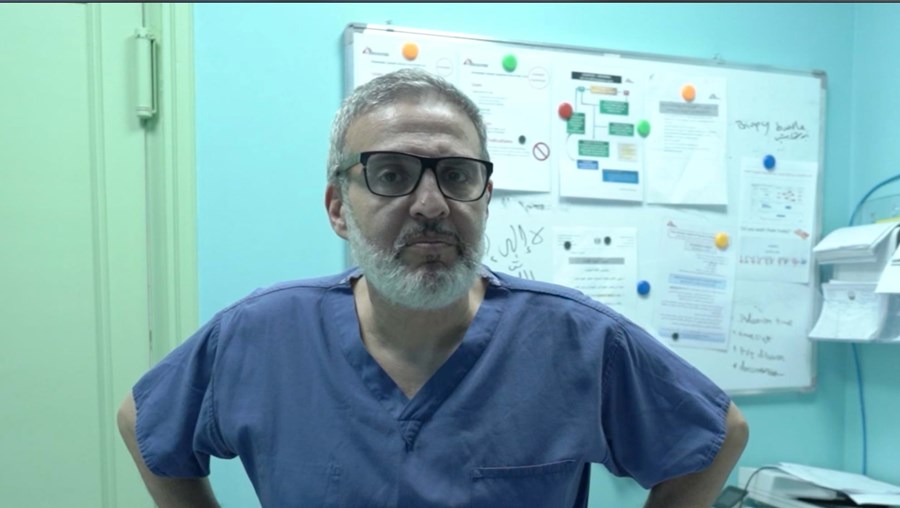
But it then turned out that the travel ban slapped on Dr Abu Sitta by Germany has a Schengen-wide effect as he was also banned from France. That appeared again something that was almost a technical accident as regards the rest of Europe.
But the Western political establishment has now doubled down again by banning him from the Netherlands, and this time the Dutch government has made it clear that it supports the ban, and is not just caught by a Schengen restriction.
So the major governments of the European Union are forbidding a distinguished surgeon from giving first-hand medical evidence of the genocide taking place. I cannot think of anything that more sharply exposes the willingness of the Western political class to abandon the most basic tenets of supposed “Western democracy” in the interests of Israel.
2) The willingness of the United States to use extreme violence against pro-Palestinian students on college campuses is another demonstration of the same abandonment of the pretence of democracy when it comes to Israel. It also illustrates what has come to be a serious generational divide in Western public opinion, with young people very strongly motivated to oppose the genocide (which is not to say that older people are pro-genocide, just that they are more split, particularly in the USA).
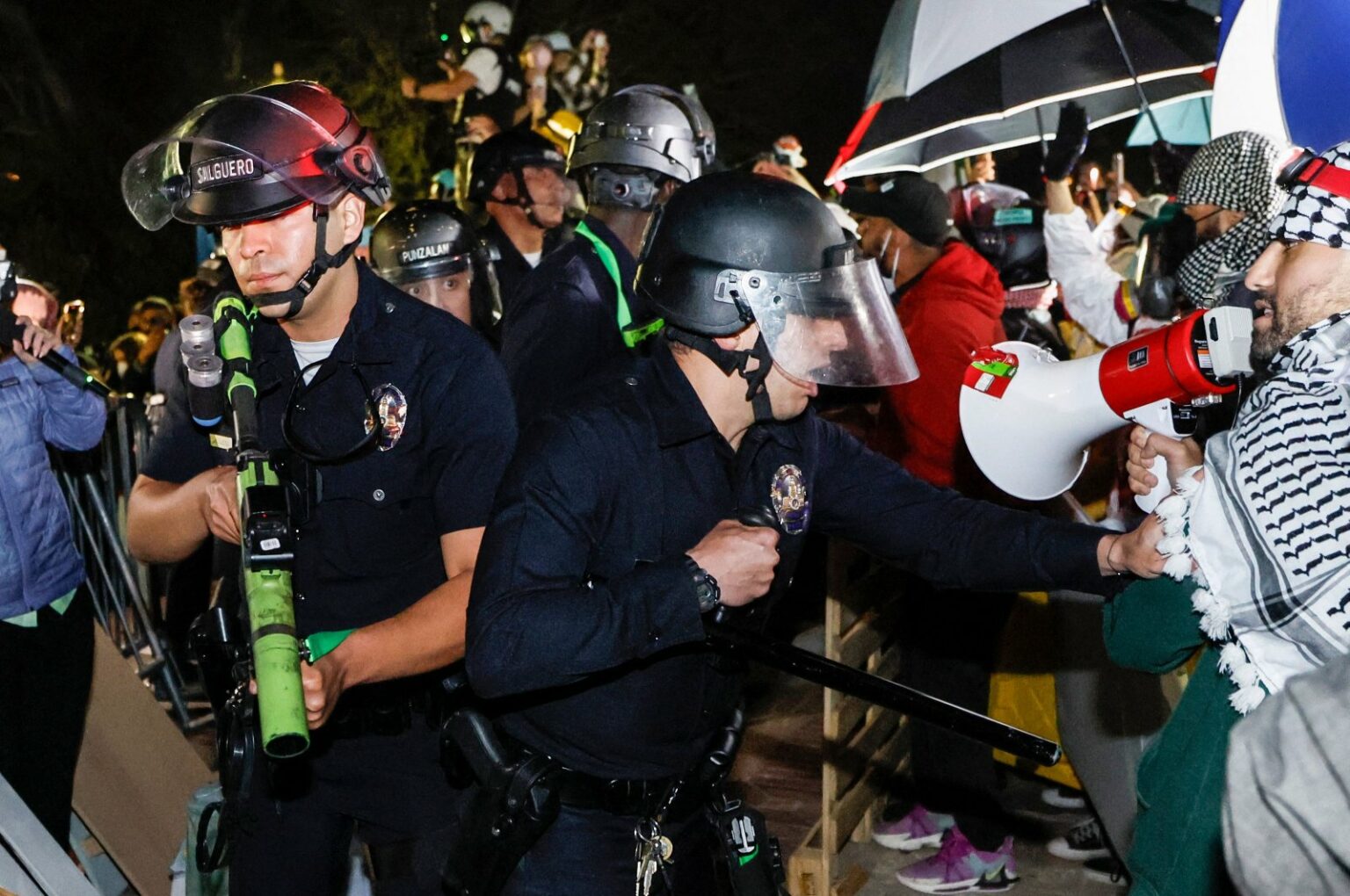
This is being followed up with yet more crazed pro-Israeli legislation in the United States, seeking to designate anti-genocide and pro-Palestinian expression on campuses as anti-semitic and thus illegal.
In many ways this typifies the reaction of the ruling class across the West. Their reaction to suddenly being exposed as the paid servants of an Israel which no longer has popular support and now causes public revulsion, is simply to attempt to ban free expression and make it specifically illegal to disagree with them.
Fair use excerpt. Read the whole article here.
-
Site: Zero HedgeSupreme Court Justices Thomas And Alito Issue Warnings About State Of AmericaTyler Durden Tue, 05/14/2024 - 09:20
Authored by Tom Ozimek via The Epoch Times (emphasis ours),
In separate remarks at two different events on Friday, Supreme Court Justices Clarence Thomas and Samuel Alito issued warnings about the state of affairs in America today, including support for freedom of speech “declining dangerously” and the nation’s capital becoming a “hideous” place where cancel culture runs rampant.
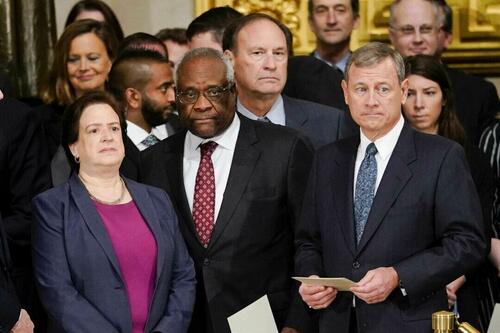 Supreme Court Associate Justices Elena Kagan (L), Clarence Thomas ((2L), Samuel Alito (2R) and Chief Justice John Roberts (R) arrive for services for former President George H.W. Bush at the U.S. Capitol in Washington, on Dec. 3, 2018. (Pablo Martinez Monsivais/AP Photo)
Supreme Court Associate Justices Elena Kagan (L), Clarence Thomas ((2L), Samuel Alito (2R) and Chief Justice John Roberts (R) arrive for services for former President George H.W. Bush at the U.S. Capitol in Washington, on Dec. 3, 2018. (Pablo Martinez Monsivais/AP Photo)
Justice Thomas spoke at a conference of the U.S. Court of Appeals for the Eleventh Circuit in Point Clear, Alabama, while Justice Alito delivered a commencement address at the Franciscan University of Steubenville, a Catholic college in Ohio, with both of the conservative-minded judges painting a dark picture—while encouraging action and offering hope.
At the Alabama event, Justice Thomas was asked to comment by the moderator—U.S. District Judge Kathryn Kimball Mizelle—about what it’s like to work “in a world that seems meanspirited.”
“I think there’s challenges to that,” Justice Thomas said. “We’re in a world and we—certainly my wife and I the last two or three years it’s been—just the nastiness and the lies, it’s just incredible.”
Justice Thomas has faced heavy fire from Democrats who accuse him of skirting disclosure rules, of corruption in general, and of being too cozy with wealthy Republicans. They have not been able to point to any specific court cases in which the justice has misbehaved. Some activists have even pushed for Justice Thomas’s impeachment.
By contrast, over 100 former Supreme Court clerks signed an open letter last year defending Justice Thomas’s integrity, calling him a man of “unwavering principle” whose independence is “unshakable.” They called various critical stories that have targeted him as “malicious” and “perpetuating the ugly assumption that the Justice cannot think for himself.”
“They are part of a larger attack on the Court and its legitimacy as an institution,” the letter also stated. “The picture they paint of the Court and the man for whom we worked bears no resemblance to reality.”
Public opinion polls suggest public trust in the Supreme Court recently fell to new lows.
Addressing the criticism, Justice Thomas said at the Alabama conference that Washington had become a “hideous” place where “people pride themselves in being awful,” while characterizing America beyond the Beltway as a place where regular people “don’t pride themselves in doing harmful things.”
Justice Thomas also expressed concern that court writings have become inaccessible to the average person, engendering a sense of alienation.
“The regular people I think are being disenfranchised sometimes by the way that we talk about cases,” Justice Thomas said, while expressing hope that this could change.
‘It’s Rough Out There’
Justice Alito warned graduates at the Catholic college in Ohio that freedom of speech and religion were both being assailed in today’s America, while expressing hope that young people would take up the mantle and fight for positive change.
In his address, Justice Alito made a reference to pop culture, namely to a graduation speech delivered by the character Thornton Melon (played by Rodney Dangerfield) in the movie “Back to School.”
He jokingly cited Mr. Melon’s advice to graduates, which was not to go out into the world after graduating because “it’s rough out there” and instead move back in with their parents, let them pay all the bills, and “worry about it.”
“As Mr. Melon said, it is rough out there,” Justice Alito said. “It’s probably rougher out there now than it has been for quite some time. But that is precisely why your contributions will be so important.”
Justice Alito said that, outside the walls of the campus, “troubled waters are slamming against some of our most fundamental principles,” referring to freedom of speech.
“Support for freedom of speech is declining dangerously,” he continued, noting that this problem is especially acute on college campuses, which he said are places where the exchange of ideas should be most protected.
“Very few colleges live up to that ideal. This place is one of them … but things are not that way out there in the broader world,” Justice Alito said.
He also raised the issue of freedom of religion being “imperiled,” noting that graduates may find themselves in jobs or social settings where they will be pressured to renounce their beliefs or adopt ones they find morally objectionable.
“It will be up to you to stand firm,” he said.
Notably, Justice Alito authored the 2022 ruling that overturned Roe v. Wade and handed the matter of deciding on abortion rights to states.
-
Site: Mises InstituteIn publicly opposing apartheid, William H. Hutt saw how legal segregation kept black South Africans from pursuing legitimate economic goals. To Hutt, apartheid deprived people of equality of economic opportunity, which kept them in poverty.
-
Site: Mises InstituteProgressive historians, journalists, and politicians claim that the Industrial Revolution and the growth of industry brought poverty and exploitation to American workers. The truth is much different, even if it is rarely heard.
-
Site: Mises InstituteProgressives claim that profits are an unjust transfer of wealth from the poor to the rich. In reality, entrepreneurs earn profits by directing resources from less valued to more valued uses to satisfy consumer needs.
-
Site: Mises InstituteDespite the accusations that Javier Milei is a fascist in libertarian clothes, many of his reforms have been successful in reversing some of the damage done to Argentina's economy by real fascists.
-
Site: Mises InstituteWhile Austrian and feminist critiques of neoclassical economics have some similarities, they also differ strongly on important points. Feminist critiques are based upon what Mises called polylogism, while Austrian critiques are based upon praxeology.
-
Site: Mises InstituteWhat better way to explain the relationship between higher-order and lower-order goods than with food? Here, we look at the falafel sandwich.
-
Site: Mises InstituteCongress claims to have targeted TikTok because China's government allegedly uses it to spy on Americans. Besides dealing with a nonexistent threat, the bill gives the federal government vast new powers to misuse.
-
Site: Mises InstituteSomalia is a country invented by European intervention. The region known as Somaliland ought to be free to secede from this imperialist creation.
-
Site: Zero HedgeRed Lobster Abruptly Closes "Dozens" Of Locations, Loses Its Key Supplier And Begins Fire Selling Kitchen EquipmentTyler Durden Tue, 05/14/2024 - 08:55
Restaurant chain Red Lobster appears to be the latest beneficiary of "Bidenomics", with reports surfacing this week that "dozens" of its locations across the country are unexpectedly closing down.
More than 80 locations in at least 27 states have now been listed as "temporarily closed" on the restaurant chain's website, according to CBS affiliate WBNS.
The report said that workers at the locations were offered "no notice whatsoever" as to the closings. The Orlando-based seafood chain known for its endless shrimp deals has been struggling with significant internal and financial challenges, the report says.
Recently, the company faced rumors of bankruptcy as it sought a buyer to avoid filing for Chapter 11, with multiple media outlets reporting the potential filing last month.
It was reported that it might file for bankruptcy to restructure its debt and reduce its 650 US locations.
The chain underwent considerable leadership changes in 2021 and 2022, with new appointees in several top positions including CEO, chief marketing officer, chief financial officer, and chief information officer, all of whom departed within two years - usually not a sign things are moving in the right direction.
Last summer, the company reintroduced its endless shrimp menu deal, which resulted in an $11 million loss.
Even more devastating, CBS reports that Thai Union, Red Lobster's top supplier, has severed ties with the chain.
A liquidation company has started an online auction for kitchen equipment and other contents from the closed Red Lobster locations, the report adds.
Amid these developments, the company has not publicly commented on the recent closures of several locations nor responded to inquiries about them.
-
Site: Ron Paul Institute - Featured Articles
From its founding in 1949 until the start of NATO’s proxy war against Russia in 2022, the principal troublesome issue for the Alliance was Washington’s repeated calls for greater burden-sharing on the part of its allies. Discontent on Washington’s part emerged early and often. President Dwight D. Eisenhower’s Secretary of State, John Foster Dulles, warned NATO’s European members that unless they did more to enhance collective defense the United States might be compelled to reassess the extent of its commitment to Europe’s security. That warning led to repeated promises of greater defense efforts on the part of the allies. Those promises were rarely followed by meaningful actions, however.
Such continued manifestations of free-riding generated periodic US calls to reduce Washington’s overall military commitment to Europe. That sentiment reached a crescendo in the late 1960’s and early 1970’s. The most serious substantive effort took the form of the Mansfield, Amendment, which proposed to reduce the US troop presence in Europe by approximately one- third. The principal sponsor was Senate Majority Leader Mike Mansfield (D-MT). Both Lyndon Johnson’s and Richard Nixon’s administrations waged a vigorous fight against the proposed legislation. Henry Kissinger, Nixon’s national security advisor, eventually led a successful fight against the proposal. Nevertheless, calls for similar action continued during subsequent administrations. Donald Trump was especially vocal in his demands for the Europeans to engage in more substantial burden-sharing.
NATO burden-sharing, however, remained much more prominent in the realm of rhetoric than substance. In 2006 and again in 2014, Alliance members promised to devote a minimum of 2 percent of their annual gross domestic product to defense. At the time that military tensions between Russia and Ukraine exploded into full-scale warfare in February 2022, those promises had remained largely unfulfilled. Despite NATO members embracing a highly confrontational policy toward Moscow, only 11 of the 31 NATO members were fulfilling their pledge of 2 percent GDP for defense. Russia’s invasion, however, led to a more serious commitment to burden-sharing. The nature of that concept also changed in two ways. Two prominent neutral powers now abandoned neutrality and applied to join the alliance. Both Sweden and Finland were prepared to join the Western bloc directed against Russia. This was a crucial development, especially for Sweden, which had been strictly neutral in international conflicts for nearly two centuries. Stockholm had even managed to avoid entanglement in the two world wars. Helsinki’s neutrality was far less voluntary. It occurred during the Cold War only because of the Soviet Union’s intense pressure. In any case, the addition of two significant military players to NATO has increased a dangerous rivalry between two competing blocs.
The other significant change in the burden-sharing concept was that previously, the NATO allies seemed to regard Washington’s desire for greater burden-sharing largely in financial terms. In other words, to both the Europeans and the United States, burden-sharing was seen primarily in terms of the European members paying a little more for policies that remained under Washington’s firm control. Now, however, burden-sharing seems to mean more involvement on the part of Europe’s NATO members with respect to weapons and strategic initiatives. Not only have those countries become more responsive to Washington’s calls for military assistance to Ukraine, several of them, including Poland, Romania, and the Baltic republics, have been taking the lead and pushing the United States to take more action against Russia.
Washington seems content with this arrangement, which amounts to a US proxy war strategy, with Ukraine handling the actual fighting against Russia and with Kiev receiving ample weaponry from NATO members. That military hardware has been coming as much from certain European alliance members as from the United States. Moreover, there has been a steady escalation in NATO’s willingness to supply ever more lethal armaments to Ukraine. For example, early in the fighting, NATO countries were primarily providing weapons with limited reach and lethality. Both aspects have gradually changed. One early escalation was to provide Ukraine with sophisticated anti-tank weapons. Now, weapons shipments even include longer range missiles capable of striking targets inside of Russia. Several allies have successfully pressured Washington into providing more destructive weapons that Biden administration leaders initially refused to authorize. Patriot air-defense missiles and M-17 Abrams tanks are two examples of such escalation.
There are growing rumors of another round of escalation that could be even more dangerous. Some alliance leaders, especially in NATO’s Eastern members, are no longer ruling out providing “volunteers” to help Ukraine in direct combat roles. Such a move would be extraordinarily dangerous and greatly increase the risk of armed clashes between Russia and NATO forces that could lead to World War III. There are media reports that as many as three thousand armed volunteers from foreign countries are already in Ukraine assisting the Ukrainian regime.
It is hard to accept the frightening possibility that Western policy has made Europe’s strategic situation even more dangerous than it was at the height of the Cold War. However, that appears to be the possible consequences of NATO’s evolving policy.
Reprinted with permission from Antiwar.com.
-
Site: LifeNews
Arizona Governor Katie Hobbs has signed the bill to repeal Arizona’s abortion ban, making it so babies will continue being aborted in the southwestern state. But that repeal doesn’t go into effect until later in the year.
Desperate to kill babies in abortions, the Planned Parenthood abortion business filed suit to repeal the abortion ban early.
But the Arizona Supreme Court’s decision Monday rejected that request from the abortion giant. The decision denied an attempt by Planned Parenthood to halt judgment affirming the state’s pro-life law, but to allow a delay for Attorney General Kris Mayes to consider an appeal.
In a response filed today, Alliance Defending Freedom attorneys asked the court to finalize its judgment affirming the state’s pro-life law, but the court temporarily paused that process, allowing the attorney general up to 90 days to consider an appeal.
“Life is a human right, and Arizona’s pro-life law respects that fundamental right. Life begins at conception,” Alliance Defending Freedom Senior Counsel Jake Warner told LifeNews. “At just six weeks, unborn babies’ hearts begin to beat. At eight weeks, they have fingers and toes. And at 10 weeks, their unique fingerprints begin to form.”
“Arizona’s pro-life law has protected unborn children for over 100 years, and while we are deeply saddened by the legislature’s recent vote to repeal the law, it won’t take effect immediately, as the legislature intentionally decided. And though the court paused its judgment, we will continue working to protect unborn children and promote real support and health care for Arizona families,” he continued.
In a gleeful message, Hobbs celebrated her own signing of the bill.
SUPPORT LIFENEWS! If you want to help fight abortion, please donate to LifeNews.com!
“With the stroke of my pen, the 1864 abortion ban is about to OFFICIALLY become a thing of the past,” she wrote on X (Twitter).
However, under the state Constitution, any law repeal doesn’t take effect until 90 days after the legislative session ends, and the end date can vary. For example, if this session ends in late July like last year, the repeal would only become effective in late October or early November.
This week, the Arizona Senate bowed to the pro-abortion mob by approving a measure to repeal the state’s new abortion ban before it ever reached implementation to begin saving babies.
With the ban repealed, babies would lose almost all protection in the state. A 15-week abortion ban would go into place that only allows protecting babies up to that point – meaning 90% of more abortions would become legal.
Two Republicans, T.J. Shope and Shawnna Bolick, sided with Democrats to deliver enough votes to pass House Bill 2677, which would repeal the pro-life law that made Arizona one of 19 states to protect babies from abortion.
Bolick described herself as pro-life but said she supported abortions in some rare circumstances. Instead of backing legislation to allow abortions in those very rare cases, she voted to subject every single unborn children to potentially be killed in an abortion.
State Sen. Jake Hoffman condemned the Republican members who voted in favor of the measure and other Republicans complained the bill was fast-tracked through the legislature instead of committees having time to evaluate the legislation and take public input.
The Arizona Life Coalition was saddened by the developments.
“This repeal signifies more than a legislative shift; it marks a profound loss for those who stand for the sanctity of every innocent human life from conception,” it told LifeNews. “Every abortion is a loss of a priceless human being and a failure to protect the most defenseless among us.”

The post Arizona Supreme Court Rejects Planned Parenthood’s Request to Get Rid of Abortion Ban Early appeared first on LifeNews.com.
-
Site: Zero HedgeUS Producer Prices Accelerating At Fastest Rate In 12 Months, Wall Street Reacts...Tyler Durden Tue, 05/14/2024 - 08:43
Ahead of tomorrow's CPI, traders are eyeing this morning's Producer Prices for any hints that the disinflation trend will return...or not.
The answer is "not!"
April Producer Prices rose 0.5% MoM (vs +0.3% exp), with March's +0.2% MoM revised down to -0.1% MoM. The downward revision did not stop the YoY read rising to 2.2% (from +2.1% in March)...
Source: Bloomberg
This is the highest YoY read since April 2023 and is the fourth hotter than expected headline PPI print...
Source: Bloomberg
Producer Prices have been aggressively downwardly revised for 4 of the last 7 months...
Source: Bloomberg
Services costs soared, dominating April's PPI gains with Energy the second most important factor. Food prices actually declined on a MoM basis.
Source: Bloomberg
On a YoY basis, headline PPI's rise was dominated by Services (rising at their hottest since July 2023). For the first time since Feb 2023, none of the underlying factors were negative on a YoY basis...
Source: Bloomberg
On a 6-month annualized rate, Final Demand Core Services PPI is rising at its highest since Q3 2021...
Source: Goldman Sachs
After last month's farcical 'seasonally adjusted' gasoline price, April saw the PPI Gasoline index rise (with actual prices at the pump) but still has a long way to go...
Source: Bloomberg
Core PPI was worse - rising 0.5% MoM (more than double the +0.2% MoM expected) - which pushed the Core PPI YoY up to +2.4%...
Source: Bloomberg
And finally US PPI Final Demand Less Foods Energy and Trade Services rose by 0.4% MoM and 3.1% YoY (the highest in 12 months).
Worse still the pipeline for primary PPI is not good as intermediate demand is starting to accelerate...
Source: Bloomberg
Here are Wall Street’s reactions to PPI:
Chris Larkin at E*Trade from Morgan Stanley:
Sticky inflation looked downright stuck this morning after a much hotter-than-expected inflation reading. But with last month’s numbers revised lower, this report may not have been as much of an upside shock as it first appeared to be.
Right or wrong, the CPI tends to have a bigger short-term impact on the markets, so the picture could look much different 24 hours from now. But if the CPI also comes in above expectations, the interest rate picture may be thrown into doubt.Bespoke Investment Group:
The results of April’s PPI showed a hotter-than-expected m/m reading. That’s the bad news. On a y/y basis, though, the readings were much closer to expectations as March’s report was revised down to negative 0.1% on both a headline and core basis.”
Chris Zaccarelli at Independent Advisor Alliance:
This week is important for markets because they are worried about inflation and this morning’s producer price index hasn’t done anything to assuage those fears.
The most important data release is tomorrow’s CPI print because the Fed’s dual mandate is based on CPI and unemployment, with the former being what the Fed is solely focused on right now.
We believe that the stock market will move higher throughout the year on strong corporate profits and consumer spending, but volatility is likely to spike in the meantime, because the inflation data is going to keep the Fed on edge.Quincy Krosby at LPL Financial:
Moreover, this report underscores Fed concerns that the path of disinflation has stalled, requiring a higher-for-longer policy stance to combat seemingly entrenched inflation.
An overriding question — and potential dilemma — hovering over markets is whether the broader economic landscape is softening at the same time inflation inches higher, making the Fed’s job increasingly difficult.Bill Adams at Comerica Bank:
Between an upside surprise and downward revisions to prior data, the trend in total PPI was slightly higher than expected in April.
The PPI report suggests upside risk to the April CPI report, which will come out tomorrow.
At the margin the Fed will see the PPI report as another reason to slow-roll interest rate cuts.Paul Ashworth at Capital Economics:
These days we mostly care about what the PPI means for the Fed’s preferred PCE deflator measure of core consumer price inflation.
In that respect, April’s news was mixed but, on balance, encouraging. The bad news is that PPI portfolio management prices increased by 3.9% m/m. But that was more than outweighed by the good news. We’ll know more after the release of April’s CPI tomorrow.Scott Helfstein at Global X:
Inflation and the Fed are less important than growth, and companies have adjusted to the new reality of higher prices and continue to look for technology solutions to manage for profit.
The last mile on inflation was always going to be the hardest, but we should be comfortable with these numbers.Over the past month, 'higher prices' have dominated 'lower prices' in recent survey data...
Higher producer prices:
- New York Empire manufacturing price paid advanced to 33.7 from 28.7.
- Philadelphia Fed manufacturing reported prices paid gained to 23.0 from 3.7 in March.
- Philadelphia Fed non-manufacturing prices paid rose to 31.0 from 26.6 in the prior month.
- Richmond Fed services prices paid rose to 6.11 from 5.43 in March.
- Kansas City Fed manufacturing prices paid advanced to 18 from 17.
- Kansas City Fed services input price growth continued to outpace selling prices.
- S&P Global manufacturing input cost inflation quickened to hint at sustained near-term upward pressure on selling prices.
- ISM Manufacturing prices paid gained to 60.9, the highest since June 2022, from 55.8 in March.
- ISM Services prices paid notched up to 59.2, the highest since January, from 53.4 in March.
Lower producer prices:
- New York Fed Services prices paid fell to 53.4 from 55.1 in March.
- Richmond Fed manufacturing growth rates of prices paid dipped to 2.79 from 3.22 in March
- Dallas Fed Manufacturing outlook reported prices paid for raw materials dropped to 11.2 from 21.1 in the prior month.
- Dallas service sector input prices index nudged down to 28.8 from 30.4 in the prior month.
- S&P Global Service saw input costs slowed from six-month highs in March.
Do you see the 'flation' now, Jay?
So, no, The Fed does not have inflation under control.
However, there is some hope for tomorrow's CPI as many of the drivers for the consumer prices that are echoed in the producer prices are not accelerating...
No reason to be alarmed by PPI... Strong stock market performance drove part of the gains, but airfares down sharply, auto insurance flat, and general consumer goods markups down... https://t.co/8478c7rykF
— Gregory Daco (@GregDaco) May 14, 2024A big surprise miss tomorrow, of course, would send stocks to the moon (GME-style) and give Powell what he needs to start cutting.
-
Site: Zero HedgeMarkets Now Face Make Or Break Inflation DataTyler Durden Tue, 05/14/2024 - 08:20
By Michael Msika, Bloomberg markets live reporter and strategist
European stocks are hovering around record highs on conviction that interest rates will come down and revive the economy, making this week’s inflation data a key to extending the rally.
Monetary policies in the US and in Europe are expected to diverge for a few months, with the European Central Bank seen cutting rates earlier than the Fed with inflation looking more in check on the old continent. Yet, US data is always in the driver’s seat when it comes to financial markets, and this week should be no exception, making it all about US CPI.
Whatever the print, the impact that the figure may have on bond yields is looking increasingly important as the correlation between European equities and US treasury yields is now the most negative since the mid-1990s, a pre-condition to a major rally back then.
Morgan Stanley strategists led by Marina Zavolock see the case continuing to build up for a 1990s play-book that saw stocks rallying around the Fed pivot, driven by bond-sensitive sectors like real estate, construction and materials, as well as utilities. “A key catalyst to make or break the trade is this week’s US CPI print,” they say.
The disinflation process is continuing but has been stalling in past months, triggering a repricing in the outlook for rate cuts, particularly in the US. Yet, the subsequent wobble seen in stock markets in April has now been erased, with volatility back to subdued levels both in the US and in Europe. In fact, our preferred measure of near-term stress, the 2/8 VIX future spread is already back to calm levels.
“We think vol (VIX) and vol-of-vol (VVIX) have now found a lower bound in the near-term,” say UBS derivatives strategists led by Maxwell Grinacoff, seeing over 1% implied move for the market on CPI data. “We favor selling puts to fund upside call spreads to position for a moderate retracement higher in volatility risk premia ahead of key CPI and retail sales data.”
Granted, the market has been sensitive to macro data, especially inflation, as shown in the chart below. While some of the moves have often been short-lived, investors may want to keep in mind that the S&P 500 has not had a 2% drop in over 300 trading days, which is abnormal, so some deeper correction can’t be excluded based on history.
Still, one thing that could play in favor of the market is that positioning is now a bit more balanced. While vol control funds’ allocation is still near the historical maximum, CTAs have reduced their equity long positions globally, and risk parity funds also trimmed their exposure to around historical average, according to Deutsche Bank strategists.
“Squeeze risks for rate-sensitive laggards on a CPI miss outweigh downside risks on a CPI beat,” say Bank of America derivatives strategists including Ohsung Kwon. They add that with inflation above consensus for five straight months, the rates market has already priced out five cuts so far this year. But they see equities able to tolerate higher inflation. An in-line print should also be net positive, removing the inflation overhang at least in the near term, they say.
“We expect this week’s April CPI report will likely be central to market participants’ focus and the tone that the market will likely take on near term,” says Oppenheimer Asset Management chief strategist John Stoltzfus. “Near-term volatility could in our view continue to present opportunity for investors to ‘catch babies that get thrown out with the bath water’ in periods of market down drafts.”
-
Site: AsiaNews.itInternational Nurses' Day offered an opportunity to acknowledge this valuable service. The event also highlighted the violence they often endure because of their gender and beliefs. Sister Alvina, a Franciscan in charge of the parish's medical dispensary for 30 years, laments that nurses are 'often discriminated' and 'discouraged by their superiors in hospitals.'
-
Site: Zero HedgeAMC Raised $250 Million In ATM Offering As 'Meme' Stocks Rocket HigherTyler Durden Tue, 05/14/2024 - 08:05
Update (0915ET): Is this 'meme stock frenzy', The Fed's fault once again?
The last time US financial conditions were this easy (jawboned by Fed officials' pivot) was the start of the first manic meltup in GME and its meme-mates...
The meme mania has started to spread with not just AMC and GME, but Virgin Galactic, BlackBerry, Nikola, and SunPower all soaring among many others...
* * *
With AMC Entertainment and GameStop's short squeezes causing significant losses for short sellers on Monday, we noted the growing likelihood that "bankers are burning the phones at GME and AMC pitching ATM equity offerings for after the close."
You know jefferies bankers are burning the phones at GME and AMC pitching ATM equity offerings for after the close
— zerohedge (@zerohedge) May 13, 2024Fast forward to Tuesday morning.
And there it is
— zerohedge (@zerohedge) May 14, 2024
AMC Raised About $250M of New Equity Capital in ATM Offering
Thank you retail investors https://t.co/MPu8vfEmNzAnd this.
And 99% of the stock was sold yesterday bro
— zerohedge (@zerohedge) May 14, 2024Bloomberg reports that AMC completed a previously disclosed ATM on March 28. The deal was completed through Citigroup Global Markets, Barclays Capital, B. Riley Securities, and Goldman Sachs & Co., raising about $250 million in new capital for the struggling company - at an average price of $3.45 per share - or about 72.5 million shares.
Meanwhile, AMC is up 95% in premarket trading in New York, trading around the $10 handle. In the last two days, shares are up a whopping 232%.
Before yesterday's ripper, AMC was a perfect candidate for a squeeze, with 55.4 million shares, or about 18.82% of the float short.
The revival of the 'Meme day trading army' - occurred oddly with a post on X from Roaring Kitty, also known as Keith Gill, on Sunday night.
— Roaring Kitty (@TheRoaringKitty) May 13, 2024GameStop is also higher in premarket, +124% to the $68 handle, on yet another massive short squeeze. In two days, shares have squeezed over 269% higher.
Hedge funds were scorched in yesterday's Meme stock squeeze.
Hedge funds got roasted in today’s Meme Stock squeeze.
— David Marlin (@Marlin_Capital) May 14, 2024
We just witnessed a 4-Sigma day in HF VIP Longs vs Most Shorted Stocks (-5.9%).
This is the 2nd worst day since the original Meme Stock Mania. $GME $AMC $NVAX $BYND pic.twitter.com/fIjZDGZiehGS' Most Shorted Stock Index had the largest single-day increase since mid-December.
On Monday, we cited a note from Goldman Sachs flow of funds guru, Scott Rubner, who told clients, "I am starting to see some real FOMO start to develop based on incomings last week. Roaring Kitty is back, the message boards are going crazy this am. It is time for a thread."
Being a squeeze, and just a squeeze, nothing is constant - and what goes up, at some point - after the hedge funds are roasted - must come down—yet another painful lesson.
-
Site: RT - News
Estonia’s defense minister has dismissed remarks by a presidential advisor regarding a possible military deployment
Estonian Defense Minister Hanno Pevkur has insisted that neither Tallinn nor the European Union are considering proposals to deploy troops to Ukraine.
He was commenting on remarks made by Madis Roll, the national security advisor to Estonian President Alar Karis, who told news outlet Breaking Defense last week that the country was “seriously” considering sending troops to fill “rear” roles in Ukraine.
According to Roll, the Estonian government is weighing up the potential move in a bid to help Kiev solve its manpower problem and send more soldiers to the front line.
The article reported that Estonian troops could be positioned away from the battlefield and assume non-direct combat roles from Ukrainian Armed Forces in order to free them up to fight on the front line.
The outlet said Roll had suggested that the move could be part of a full NATO mission “to show broader combined strength and determination,” but didn’t rule out the possibility of Estonia acting with a smaller group of allies.
The idea “has not reached anywhere” either in Estonia or at EU level, Pevkur said, adding that there had been no specific discussion within government on the matter.
Read more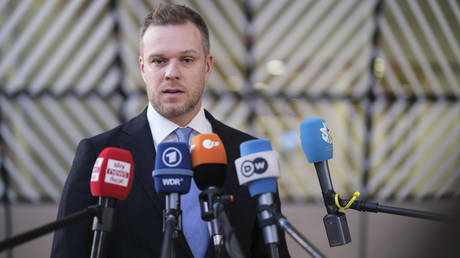 Baltic state backs sending NATO troops to Ukraine
Baltic state backs sending NATO troops to Ukraine
“I think that, according to Madis Roll, it has perhaps been interpreted too boldly” he told ERR. “There is certainly no initiative of Estonia’s own, and Estonia is certainly not going to do anything alone,” added the defense minister.
Estonia, along with Latvia and Lithuania, has been at the forefront of the West’s confrontation with Moscow since the beginning of the Ukraine conflict in 2022. Tallinn and the other Baltic states have long touted a strategy of backing Kiev with NATO troops.
Last week, Lithuanian Prime Minister Ingrida Simonyte told the Financial Times that she had been given the authority by parliament to deploy troops to Ukraine for training, but that Kiev had not made such a request.
Lithuanian Foreign Minister Gabrielius Landsbergis told The Guardian last week that he favors deploying NATO military instructors with air defense cover to Ukraine.
In recent months, French President Emmanuel Macron has repeatedly floated the idea of sending NATO troops to Ukraine. Several other member states have pushed back against Macron’s comments, however, insisting they have no plans to deploy troops.
Russia has repeatedly warned that it would view any NATO troop deployments in Ukraine as a major escalation, adding that it would not change the situation on the battlefield.
-
Site: Zero HedgeAnglo Goes Bold: Unveils Breakup Plan To Transform Into Copper Giant Amid BHP Takeover BattleTyler Durden Tue, 05/14/2024 - 07:45
London-listed Anglo-American has unveiled a "clear, compelling, and decisive plan to unlock significant value from its portfolio." This strategy involves selling its platinum and diamond business units while concentrating on copper, positioning itself to prosper off the 'Next AI Trade' as data centers and power grids will use an enormous amount of the base metal to 'power up' the digital economy. Also, it's a move to thwart a hostile takeover attempt from BHP Group.
Anglo was forced to radically transform itself into a copper giant because of BHP's twice-rejected takeover bid, now worth £34 billion ($43 billion). The move also responds to shareholder pressure to focus on copper assets and demerge its stakes in less profitable ones, such as its steelmaking unit, coal business, Anglo American Platinum, and De Beers (diamonds).
Anglo Chief Executive Officer Duncan Wanblad's major overhaul aims to replicate rival BHP CEO Mike Henry's proposed idea of transforming Anglo into one of the world's biggest copper giants.
Financial Review noted that Wanblad plans to wait until after the South African elections on May 29 before announcing his complete restructuring of the company, which will need South African government approval for a demerger of its platinum and diamond mines.
"The only thing the BHP bid [did] was force the timeline on work we were already doing," Wanblad said on a call at 0300 ET. He will present the overhaul plan at the Bank of America Global Metals, Mining & Steel Conference in Miami, Florida, today.
He continued, "I would probably not have announced this at this particular point in time, it would have been just a little bit later … I would have been much more sensitive in terms of the stakeholder management of this, but I now have no option."
In markets, Anglo shares in London slipped by 3%, while BHP's shares increased by 3%, reflecting the market's perception of a reduced takeover probability.
"The outcome of Anglo's strategic review will not have changed BHP's plans, but they are probably actively assessing where they are now in light of this," said Lachlan Shaw, an analyst from UBS Group AG.
Joshua Mahoney, chief markets analyst at Scope Markets, wrote in a note, "The decision to spin off their diamond, platinum, and coal mining operations will see a greater focus on copper."
Mahoney said, "With copper rising into a fresh two-year high this morning, there is a clear surge in demand for this key material as the world progressively moves towards increased electrification."
Concentrating on copper assets is the correct move for Anglo, as Goldman's Nicholas Snowdon penned in a note last week for clients that metal market is "moving into extreme tightness."
Last month, being uber-bullish on copper, Snowdon wrote, "Copper's time is now" (available to pro subscribers in the usual place)...
Separately, Bank of America's commodity desk jumped on the copper trade, warning that a "supply crisis is here."
In December, billionaire mining investor Robert Friedland explained to Bloomberg TV in an interview that copper prices are set to soar because the mining industry is failing to increase supply ahead of 'accelerating demand.' He warned:
"We're heading for a train wreck here."
As we've noted in "The Next AI Trade" & "Everyone Is Piling Into The "Next AI Trade"", as well as "The "Next AI Trade" Just Hit An All Time High," - data center demand and powering up America will need copious amounts of copper, at a time when mining supplies are dwindling. We all know what that means for price.
-
Site: RT - News
The bloc is on track to be producing 2 million shells per year for Ukraine, the European commissioner for the internal market has said
The European Union’s defense industry has partially switched to a war economy, European Commissioner for Internal Market Thierry Breton has said.
Kiev could face a “dangerous period” this year as the focus of Western politicians backing it has now turned to the European Parliament elections on June 6-9 and US presidential election on November 5, Breton explained in an interview with French broadcaster BFMTV on Monday.
Russia may well take advantage of this “uncertainty” and “move forward” on the front line, he said.
“Because of this, we in Europe have decided to significantly increase our subsidies in terms of weapons and ammunition” for Ukraine, the commissioner stressed.
According to Breton, the EU is now on track to be producing 2 million shells, including 155mm caliber, per year for Ukraine.
Read more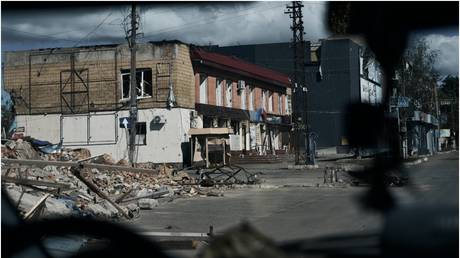 Ukraine facing ‘a nightmare’ – CNN
Ukraine facing ‘a nightmare’ – CNN
He said that it is fair to say the EU has “moved into a war economy” at least in terms of shell production.
“Now the challenge is for us to move into a war economy in all segments of the European defense industry,” the commissioner added.
In March, the European Commission approved the allocation of €500 million ($590 million) to boost the production of shells in the EU. According to Brussels, the bloc will be able to make 2 million shells annually by the end of 2025.
Last year, the EU vowed to supply Kiev with 1 million shells by March 2024. However, it later acknowledged that it would not be able to meet this goal. Ukrainian officials said that they received around a third of what had been promised.
In April, French President Emmanuel Macron insisted that the switch to a war economy was “necessary” as defense spending and military orders have been on the rise across the EU.
READ MORE: Danish PM reveals timeline for first F-16 delivery to Ukraine
Russia has warned repeatedly that foreign weapons being sent to Kiev will not prevent Moscow from achieving its military goals, but will merely prolong the fighting and increases the risk of a direct confrontation between Russia and NATO. According to officials in Moscow, the provision of arms, intelligence sharing, and the training of Ukrainian troops mean that Western nations have already become de-facto parties to the conflict.
-
Site: Novus Motus LiturgicusThe following texts are take from William Durandus’ Rationale Divinorum Officium, book 6, chapter 104, in my own translation. On the feast of the Lord’s Ascension, which is celebrated on the fortieth day after Easter, since Christ on the fortieth day after the Resurrection ascended into heaven, a solemn procession is held; for the Lord commanded that His disciples go before him to the Mount of Gregory DiPippohttp://www.blogger.com/profile/13295638279418781125noreply@blogger.com0
-
Site: Zero HedgeThe Broken Magic Trick Behind Dollar DominanceTyler Durden Tue, 05/14/2024 - 07:20
Authored by Peter Reagan via Birch Gold Group,
The total debt owed by the United States federal government has reached incredible levels. Today, the total is $34,541,727,970,599.17 – but by the time you read this article, it’ll probably be higher.
I say “probably” because the debt is growing exponentially that by the time you read this, it’s quite possible that another few hundred billion have taken the total over $35 trillion.
Look at the official chart and attention to how fast total debt has risen since the turn of the century:
In the year 2000, total government debt was $5.7 trillion.
Ah, the good old days…
The nation’s debt has grown more than $5.7 trillion since President Biden took office!
Let me put it another way:
-
It took the federal government 224 years, the Louisiana Purchase, the Civil War and two World Wars to rack up the first $5.7 trillion in red ink
-
And then it took the Biden administration just three years to rack up the last $5.7 trillion!
I apologize for going on and on about this but I honestly cannot believe it.
It’s hard to call this an apples-to-apples comparison, though, because for the majority of those first two centuries, the dollar’s value was based on a defined quantity of gold or silver.
Well, obviously that cannot be the case any more! Based on my back-of-the-envelope estimate, there’s only $16.1 trillion in gold in the world (based on current prices). The ONLY way to create such an astonishing mountain of debt was to divorce the currency from any intrinsic value.
It’s almost a magic trick.
Think about it…
Once, a dollar was 3/4 oz of silver, or 1/2 oz for a $10 coin. People had to go and dig that precious metal out of the ground, refine it and stamp it. That’s a lot of work.
Then, the dollar became a paper certificate exchangeable for the equivalent weight of gold or silver. That’s just more convenient.
Finally, the dollar became just the paper itself.
It’s like money from nothing!
And to be clear, this “money from nothing” magic trick has been working since Nixon ended the last vestiges of the gold standard just over 50 years ago.
But you know how sleight-of-hand works, right?
It depends on deception.
And every time you do the same trick, the audience is one step closer to figuring out that it’s not really magic after all…
This exact same magic trick that’s been supporting both the federal government and the U.S. dollar for five decades just isn’t working as well as it used to.
The end of magical debt thinking
Writing for Project Syndicate, economist and author Kenneth Rogoff recently summarized the insane mentality that drives the current debt situation:
For over a decade, numerous economists – primarily but not exclusively on the left – have argued that the potential benefits of using debt to finance government spending far outweigh any associated costs. The notion that advanced economies could suffer from debt overhang was widely dismissed, and dissenting voices were often ridiculed.
Just so we’re clear, “debt overhang” is defined as a “debt burden so large that an entity cannot take on additional debt to finance future projects, dissuading current investment.”
Via Investopedia
A debt overhang makes it impossible to do anything other than pay back the debt.
That’s what makes it dangerous.
The people who “widely dismissed” the very idea that a whole nation could suffer from a debt overhang are a lot quieter now.
Rogoff explains why:
The tide has turned over the past two years, as this type of magical thinking collided with the harsh realities of high inflation and the return to normal long-term real interest rates. A recent reassessment by three senior IMF economists underscores this remarkable shift. The authors project that the advanced economies’ average debt-to-income ratio will rise to 120% of GDP by 2028, owing to their declining long-term growth prospects. They also note that with elevated borrowing costs becoming the “new normal,” developed countries must “gradually and credibly rebuild fiscal buffers and ensure the sustainability of their sovereign debt.”
That’s another way of saying, “What got us here won’t get us there.”
The federal government printed its way into this debt mountain – it cannot print its way out. See, they’ve done the magic trick too many times.
The audience caught on.
Now we ALL know there’s no magic. Nothing but a rapidly-growing pile of IOUs.
The question becomes, does the government have time to learn a new magic trick?
“The United States has about 20 years left”
Cole Walmsley of Gaiter Capital wrote an entire essay on X to summarize the conundrum facing the U.S. right now. The whole thing’s worth a read, but here are the highlights:
The U.S. Treasury, which is part of the U.S. Federal Government, has to sell new debt to new investors to pay off the old debt from old investors. This is because of 1) the constant budgetary deficits and 2) the debt from years past coming due.
Remember, the debt is made up of two big chunks: This year’s deficit, and all the other deficits racked up over the decades.
The U.S. Federal Government has been in a budgetary deficit in 49 of the last 53 years, with the last surplus year being in 2001.
But yet, even in that 2001 “budgetary surplus” year, the total debt amount increased.
Why?
Because a whole bunch of debt from years past came due.
He does a good job of putting the concept of “a trillion” into perspective, too:
Trillion is just a word. Let’s make sure we note the significance.
A *billion* seconds ago was 1993 (31 years ago).
A *trillion* seconds ago was 30,000 B.C.
And then multiply that trillion by 34.7.That’s the scale of the United States debt bill.
Finally, Walmsley exposes the shell game at the heart of the federal government’s balance sheet:
The U.S. Treasury always has to have buyers of its debt, because if they don’t, they won’t be able to pay off 1) their deficit spending and 2) the old debt coming due (and the interest on the debt). If they fail to pay those off, the Government would default and collapse.
Well, then, who buys all the U.S. Government debt?
Key point: The largest buyer and owner of the U.S. Federal Government debt is THE U.S. FEDERAL GOVERNMENT THEMSELVES.
Approximately one third of all U.S. government debt is “owed” to another government department!
You know, this would be hilarious if it wasn’t our Social Security he’s talking about…
So how long can this farce last?
We have a couple of answers.
First, the Wharton School of Business explained why the United States is running out of time to recover from the teetering mountain of debt:
We estimate that the U.S. debt held by the public cannot exceed about 200 percent of GDP…
Larger [debt-to-GDP] ratios in countries like Japan, for example, are not relevant for the United States, because Japan has a much larger household saving rate, which more-than absorbs the larger government debt.
Under current policy, the United States has about 20 years for corrective action after which no amount of future tax increases or spending cuts could avoid the government defaulting on its debt whether explicitly or implicitly (i.e., debt monetization producing significant inflation). Unlike technical defaults where payments are merely delayed, this default would be much larger and would reverberate across the U.S. and world economies.
Japan has a debt-to-GDP ratio of about 260% made possible by the savings habits of Japanese households!
Here in the U.S. we save about 3.2% of our income right now – while in Japan, the savings rate averages 13.2% (and has been as high as 62%!)
Obviously, American households aren’t saving anywhere near enough money to support federal government deficits, even if they wanted to.
(We already pay taxes! Why should we give the White House even more of our money?)
In fact, the “end” could truly be drawing near… In his book This Time Is Different: Eight Centuries of Financial Folly, coauthored with Carmen Reinhart, Rogoff identified dozens of sovereign debt crises.
Every one unfolded the same way, at about the same time – all for the same reason.
The government’s irresistible urge to keep spending until it becomes obvious to everyone, even elected officials, that IOU is another way of saying, “You’re screwed.”
Now you know how much a trillion really is and why the U.S. won’t take Japan’s path to managing its debt.
Now you know the magic trick supporting the global financial system is just an accounting con.
So let’s talk about how we can move past the magical thinking, into the clear light of reality…
Real assets, real value
If you want to secure your retirement in the face of insane debt spending on the part of the Biden Administration, then it’s time to consider alternative options.
Unlike the vague promise of the dollar, physical precious metals like gold and silver are tangible physical assets you can hold in your hand. They can’t be replaced, canceled or inflated away.
The Founding Fathers knew this – and that’s why they tried to make certain our nation would never fall into the same trap that destroyed so many proud nations in the past. But they couldn’t save the nation.
That doesn’t mean we can’t save ourselves.
Make sure you’ve sheltered at least some portion of your savings with real safe-haven assets that you can hold in your hand. No amount of economic or government insanity can destroy gold and silver.
Empires rise and fall like tides on the beach of history. Gold and silver simply endure.
* * *
With global instability increasing and election uncertainties on the horizon, protecting your retirement savings is more important than ever. And this is why you should consider diversifying into a physical gold IRA. Because they offer an easy and tax-deferred way to safeguard your savings using tangible assets. To learn more, click here to get your FREE info kit on Gold IRAs from Birch Gold Group.
-
-
Site: Mises InstituteFor most Americans, the debate is about what size the welfare state should be. Austrian economists, however, ask why there should be a welfare state at all.
-
Site: PaulCraigRoberts.org
Putin Needs to Shake-Up Himself
Paul Craig Roberts
Putin is conducting a large shake-up in the Russian government. He needs to give himself a good shaking as well.
Ramzan Kadyrov, leader of Russia’s Chechen providence said on Russia’s Rossiya TV channel:
“I believe that we need to attack more actively, we need to hit hard while there is time. This month we need to take the nearest territory, we definitely need to take Odessa and Kharkiv. Then sit this Zelensky down and force him to sign all the papers that Russia needs for the security of our state, citizens and the Russian-speakers who live on the territory of Ukraine.”
This is the second Russian war leader after Yevgeny Prigozhin, the leader of the Wagner Group, to express dissatisfaction with the glacially slow pace at which Putin is conducting the conflict. One wonders if Kadyrov will have a similar fate to Prigozhin.
I am not an expert on the Russian military. My impression is that the Wagner and Chechen soldiers are Russia’s best combat troops. It is a pity to waste such troops in a war conducted at a snail’s pace.
The slow pace at which Putin has conducted the war has resulted in the war being greatly widened and thus made much more dangerous and difficult to resolve. Indeed, Putin is now in danger of NATO occupying Odessa before Russian troops can get there. If the West can keep Odessa and Kharkiv out of Russian hands, the war will be a defeat for Putin. It is inexplicable that Putin takes this risk. Putin’s dilemma is that a man who sees himself as an instrument of peace is a poor war leader.
Curiously, Foreign Minister Lavrov says that the West has decided to prolong the war. No. The prolonged war was Putin’s decision. A war that should have been over in three weeks has lasted 27 months.
Putin’s neglect of the war’s requirements is the reason that Russians in the Russian city and region of Belgorod are slaughtered by drones and missiles on their way to work and why “Russian apartment buildings in Russian cities struck by high intensity weapons supplied to Ukraine by the West collapse on the inhabitants. The snail-paced conflict was supposed to save lives. Instead, casualties have multiplied many fold and spread to Russian civilians distant from the battlefield.
Now there is a shakeup at the top of the Russian military with a civilian without military experience taking over as defense minister. I think Putin would be taken more seriously if he had appointed Ramzan Kadyrov as defense minister. Instead, Putin has stuck in an economist who, like Putin’s central bank director, is more concerned with the expense of the conflict–now one-third of the Russian budget–than they are about winning the war before it spins out of control. The neo-liberal Putin supports as Russia’s central bank manager is a failure on all fronts. She left Russian assets in the West to be seized by Washington’s sanctions. She was unable to understand that Russia did not need loans from the West to develop economically. And now she imposes 16% interest rates on the Russian economy. Stalin would have long ago shot her. I have often wondered if Russia can survive Putin’s central bank director.
Putin has done a good job of Russifying a population that was infatuated with the West. The population again thinks of itself as a distinct and proud national entity, not as a wannabe cog in globalist machinery run by Washington. Putin gets kudos for this, but his conduct of the war maximizes the likelihood of the conflict spinning out of control. Prigozhin understood this, and so does Kadyrov. Will Putin understand before his limited military operation spins into World War 3?
Scott Ritter Says Ukraine is Militarily Exhausted and the Conflict Has 3 months to go.
The question is whether Washington accepts the defeat or whether more troops will follow the French Foreign Legion into the conflict.
https://sputnikglobe.com/20240511/scott-ritter-predicts-how-ukraine-will-end-1118382169.html
-
Site: AsiaNews.itThe first meetings between prefects and apostolic vicars took place in 1924, when the country was still a Dutch colony. On the anniversary an extraordinary assembly and the inauguration of the new office building. The government representative for relations with Catholics: 'Let us work together for the most neglected areas of the country'.
-
Site: Zero HedgeWanted: The Most In-Demand Jobs Of The Next DecadeTyler Durden Tue, 05/14/2024 - 06:55
Ever since the release of ChatGPT in late 2022 and other AI tools that have followed in its wake, people have been pondering the potential of artificial intelligence to replace certain occupations, trying to figure out if and how the nascent technology will change the way people work. And while the focus of discussions like this is often on the risk of certain jobs being replaced by emerging technologies; as Statista's Felix Richter reports, these shifts, as well as societal changes, usually offer new employment opportunities as well.
Think of the rise of e-commerce for example: while it has led to a decline in retail jobs, it has supported strong job growth in transportation and warehousing and still does.
According to the U.S. Bureau of Labor Statistics’ Occupational Employment Projections, transportation and warehousing is going to be among the fastest growing sectors over the next decade, with wage and salary employment in the sector projected to grow 8.6 percent between 2022 and 2032.
At 9.7 percent, the biggest increase in employment is expected for the healthcare and social assistance sector, which is driven less by technological changes and more by demographic shifts. Due to the ageing population and the growing prevalence of chronic conditions, the healthcare and social assistance sector is projected to account for 2.1 million new jobs by 2032, making up almost half of all new jobs expected by the end of the projection period.
You will find more infographics at Statista
Looking at individual occupations, this trend is also evident, with home health and personal care aids projected to be by far the fastest-growing occupation over the next decade, adding more than 800,000 jobs by 2032.
With registered nurses and medical and health service managers also in the top 10, it’s clear that the health sector as a whole is going to be a major driver of employment growth in the near future.
-
Site: PaulCraigRoberts.org
The corrupt DOJ prosecutors trying to frame President Trump admit to tampering with evidence, a felony. Will the prosecutors be indicted and put on trial?
-
Site: PaulCraigRoberts.org
WHO’s version of Dr. Fauci prepares us for a more deadly virus than Covid to scare us into a more deadly vaccine than the Covid vax
https://twitter.com/WarClandestine/status/1789787265553576242
As Bill Gates told us, we are going to have one pandemic a year for a decade at the end of which there will be few left of us.
And nothing is done about this genocide plan.
-
Site: PaulCraigRoberts.org
One of America’s Best Men was destroyed by the CIA and the Washington Post
Watergate was a CIA plot to remove Nixon from office before he normalized relations with Russia and China, thus removing the necessary enemies needed by the military/security complex for its power and profit and unaccountability.
Americans fell for the plot against their president. The liberal-left hated Nixon and were delighted with the CIA’s operation against him.
-
Site: Zero Hedge"Markets Extremely Quiet" Ahead Of PPI, CPI, Powell SpeechTyler Durden Tue, 05/14/2024 - 06:33
US equity futures are flat into tomorrow's CPI/Retail Sales print with PPI the major macro data point today, while Fed Chair Powell also speaks. Futures are flat after also closing unchanged yesterday when the return of the meme stonk mania sent GME and AMC soaring, and hammered L/S hedge funds, whose short books exploded, leading to P&L carnage across the board and widespread degrossing which however did not impact index prices. As of 6:30am, S&P and Nasdaq futures were unchanged. Bond yields are down 1-2bps as the yield curve bull steepens. The USD is flat and commodities are mixed with Ags lagging. Meme Stock Mania returned yesterday with GME +74% and AMC +78%, though Bitcoin was only +3%; As JPM's Andrew Tyler asks this morning "has the Retail investor reactivated and do they support Mag7?"
“Markets this morning are in extremely quiet mood ahead of tomorrow’s US consumer price index data that’s going to come out and shake things up or not,” said Kit Juckes, chief FX strategist at Societe Generale SA. “Sentiment about what the Fed’s going to do, sentiment about a lot of markets, will be determined by core CPI.”
The Stoxx Europe 600 index was little changed, hovering near a record high, as gains in auto and consumer product shares offset losses in travel and insurance names. Shares in Anglo American Plc fell after the London-based miner outlined a major shake-up to fend of a takeover approach from BHP Group, with analysts citing execution risks. Delivery Hero SE soared as much as 22% after selling its Taiwan business. A revenue beat by Tencent Holdings Ltd. pushed the stock of its largest shareholder, Prosus NV, higher. Here are the most notable European movers:
- Delivery Hero shares soar as much as 22% after the food delivery firm agreed to sell its Taiwanese operations to Uber for $950 million. The deal is attractively priced as it allows Delivery Hero to reduce debt, although regulatory approval could be a potential concern, according to analysts.
- Vodafone shares rise as much as 3.9% after the telecom operator set full-year profit and cash flow guidance ahead of estimates. The German market, which now accounts for more than 45% of Vodafone’s Ebitda, saw service revenue growth ahead of expectations.
- Nagarro shares jump as much as 23%, the most on record, after the German IT service firm’s results beat expectations. Analysts noted the contrast between its reiterated guidance and US peer Epam’s profit warning.
- Nordex shares jump as much as 8.6%, hitting the highest in two years, after the wind turbine maker beat expectations and delivered a “blowout quarter,” according to Jefferies. Analysts at Oddo upgraded the stock.
- Sonova shares jump as much as 6.6% with Morgan Stanley saying the hearing system firm’s outlook implies upgrades to sales and earnings consensus.
- Societe Generale shares gain as much as 4.1% after French President Emmanuel Macron said he’d be open to seeing a major French bank being taken over by an EU rival to spur deeper integration.
- On The Beach shares drop as much as 12% after its first-half earnings showed ongoing pressures on consumers. However, the group’s reinstated dividend and strong demand remain points of confidence, according to analysts.
- Brenntag shares fall as much as 9.6%, the most since November 2022, after the German chemicals distribution firm’s first quarter missed estimates due to pricing pressures. The company reduced its guidance for the full year to the lower end of its range.
- Rheinmetall shares decline as much as 6% after the German defense company reported a backlog for the first quarter that was €40.2 billion compared with €28.2 billion at the same time last year. Oddo calls it a slow start to 2024, with earnings below consensus.
- DCC shares drop as much as 5.3% after its results came in below expectations, bringing an end to a strong run for the international sales and support service group that took its stock to a two-year high yesterday.
- Lonza shares fall as much as 3.3% after the Swiss maker of drug ingredients reported a subdued start to the year and confirmed a flat sales growth outlook for 2024.
Earlier in the session, Asian stocks traded in a narrow range as investors awaited crucial US inflation data. A rally in Hong Kong stocks stalled ahead of key technology sector earnings due later Tuesday. The MSCI Asia Pacific Index swung between gains and losses of as much as 0.2%. TSMC and Alibaba rose, while AIA and Tokyo Marine fell. Shares in Hong Kong and mainland China closed lower ahead of major earnings. A gauge of Chinese tech companies jumped as much as 2.3% before paring much of the gains. Tech is “expected to be a bright spot amid this earnings season that has been lackluster thus far,” said Marvin Chen, an analyst at Bloomberg Intelligence in Hong Kong.
In FX, the Bloomberg Dollar Spot Index inched up for the third straight day, supported ahead of US producer price data due later Tuesday. Investors also awaited speeches by Federal Reserve President Jerome Powell and Board of Governors member Lisa Cook to see if they offer any additional hints into when US interest rate cuts will start. Markets are bracing for US CPI data due on Wednesday for more steer into whether the Fed will begin easing in September, in line with market pricing.
In rates, Treasuries edge up ahead of US inflation data, with US 10-year yields falling 1bps to 4.48%. UK government bonds have pulled back from session highs having rallied after Bank of England Chief Economist Huw Pill suggested a summer interest-rate cut is in play. UK 10-year yields fall 1bp to 4.16%. His comments also weighed on the pound which is among the weakest of the G-10 currencies, falling 0.2% against the greenback after showing little reaction to UK jobs figures released earlier.
In commodities, oil prices gained before the release of OPEC’s market outlook, with WTI trading near $79.10. Industrial metals including nickel and copper climbed, while gold was steady after Monday’s decline of more than 1%. Spot gold rises 0.5% to around $2,347/oz.
To the day ahead, and central bank speakers include Fed Chair Powell, the Fed’s Cook, the ECB’s Knot and BoE chief economist Pill. US data releases include PPI inflation for April, along with the NFIB’s small business optimism index. Otherwise, we’ll get UK unemployment for March and the German ZEW survey for May.
Market Snapshot
- S&P 500 futures little changed at 5,247.50
- Brent Futures down 0.3% to $83.10/bbl
- Gold spot up 0.1% to $2,338.66
- US Dollar Index up 0.14% to 105.36
- STOXX Europe 600 little changed at 521.06
- MXAP up 0.1% to 178.43
- MXAPJ up 0.2% to 558.88
- Nikkei up 0.5% to 38,356.06
- Topix up 0.3% to 2,730.95
- Hang Seng Index down 0.2% to 19,073.71
- Shanghai Composite little changed at 3,145.77
- Sensex up 0.7% to 73,274.89
- Australia S&P/ASX 200 down 0.3% to 7,726.76
- Kospi up 0.1% to 2,730.34
- German 10Y yield little changed at 2.49%
- Euro down 0.1% to $1.0778
- Brent Futures down 0.3% to $83.10/bbl
Top Overnight News
- European stocks and US equity futures kept to small ranges for a second day, with traders waiting for US inflation reports to give markets fresh direction. US Treasuries and the dollar remained steady.
- US President Joe Biden is hiking tariffs on a wide range of Chinese imports — including semiconductors, batteries, solar cells, and critical minerals — in an election-year bid to bolster domestic manufacturing in critical industries.
- Japanese sovereign bond yields are surging to the highest levels in more than a decade amid signs the central bank is ready to reduce debt purchases to ease pressure on the ailing yen.
- From JPMorgan Chase & Co. to Citigroup Inc., Wall Street’s most prominent trading desks are warning that investors should gear up for a potential break in the calm that’s come over the stock market.
A more detailed look at global markets courtesy of Newsquawk
APAC stocks lacked firm conviction after the indecisive performance in the US ahead of key events. ASX 200 was dragged lower by weakness in real estate and consumer staples ahead of the federal budget announcement, while Australian Treasurer Chalmers had previously cautioned against expectations for a welfare 'cash splash'. Nikkei 225 was choppy amid a weaker currency, mixed earnings releases and relatively in-line PPI data. Hang Seng & Shanghai Comp were initially boosted at the open with strength in tech and real estate although the Hong Kong benchmark eventually faded most of the gains, while sentiment was dampened in the mainland amid the threat of looming US tariffs which are expected to be unveiled today, while developer default concerns also lingered after Agile Group missed a coupon payment and flagged an inability to fulfil all payment obligations.
Top Asian News
- China's embassy said China remains open to cooperating with the US on repatriation of illegal immigrants but the US side should also demonstrate sincerity and address China's concerns, creating a suitable atmosphere for such cooperation, according to Global Times.
- Japanese Finance Minister Suzuki said it is important for the government and BoJ to coordinate policy and it is important for currencies to move in a stable manner reflecting fundamentals, while he added they will take a thorough response for forex and are closely watching FX moves, according to Reuters.
- Former BoJ executive says the BoJ may decide to reduce the size of scheduled bond purchases next month amid largely dysfunctional bond market, adding that the BoJ is likely to hold off on raising rates until September, according to Reuters.
- Australian Budget: sees 2023/24 budget surplus at AUD 9.3bln (vs. Exp. AUD 9bln) and deficits in 2024/25 - 2026/27 (as expected). 2024/25 deficit AUD 28.3bln vs. Exp. AUD 13.9bln. 2023/24 CPI seen at 3.5%, 2024/25 at 2.75% 2025/26 at 2.75%. 2023/24 unemployment seen at 4.0%, 2024/25 4.5% and 2025/26 4.5%. 2023/24 GDP growth at 1.75%, 2024/25 at 2% and 2025/26 at 2.25%. Sees iron ore price falling to USD 60/tonne, thermal coal USD 70/tonne for Q1 2025.
European bourses, Stoxx600 (+0.1%) are mixed and lack any firm direction, continuing the indecisive performance in APAC trade overnight. European sectors hold little bias with the breadth of the market fairly narrow. Autos is found at the top of the pile, building on the prior day’s gains, whilst Travel & Leisure is weighed on by Flutter (-2.5%) post-earnings. US Equity Futures (ES U/C, NQ +0.1%, RTY +0.1%) are mostly and modestly firmer, with trade tentative ahead of today’s PPI. Elsewhere, the White House says US President Biden is directing US Trade Representative to increase tariffs on USD 18bln of imports from China (in-fitting with recent reports).
Top European News
- BoE Chief Economist Pill says there is still some work to do on the persistence of inflation; not unreasonable to believe that over the summer, the BoE will see enough confidence to consider rate cuts. Not unreasonable to believe that over the summer, the BoE will see enough confidence to consider rate cuts; could cut and keep the stance restrictive. Question of when and how restriction is eased.
- Even a very poor EZ inflation reading this month would not necessarily dissuade the ECB's Governing Council from going through with the 25bp rate cut that has been amply signalled for its June meeting, according to a Eurosystem insider cited by Econostream.
FX
- Dollar is a touch firmer vs. most peers and briefly popping above yesterday's 105.36 high in quiet trade, though with traders mindful of today's PPI, and CPI on Wednesday, in addition to Chair Powell at 15:00BST/10:00ET.
- EUR is steady vs the USD after the pair failed to hold above the 1.08 mark. EUR/USD is currently contained within yesterday's 1.0765-1.0806 bounds with newsflow light, ZEW data failed to move the markets.
- GBP is the laggard across the majors. GBP was choppy following mixed jobs data, though commentary from BoE's Pill sent Sterling lower. The Chief Economist continued to talk up the possibility of rate cuts. Cable down as low as 1.2510 with eyes on a test of 1.25; not breached since May 9th.
- JPY is once again losing ground to the USD with markets bracing for upcoming US inflation prints, which could be the next inflection point for the pair. USD/JPY has been as high as 156.56 with not much in the way of resistance until 157.
- Mildly diverging fortunes for the antipodes with NZD edging out moderate gains vs. the USD. AUD/USD is holding above the 0.66 mark and respecting yesterday's 0.6587-0.6628 range in quiet trade.
- PBoC set USD/CNY mid-point at 7.1053 vs exp. 7.2307 (prev. 7.1030).
Fixed Income
- USTs are incrementally firmer but with magnitudes much more contained than EGBs as we await US PPI ahead of Wednesday's CPI print. USTs at the top-end of 108-24 to 108-29 bounds which are contained by Monday's 108-23 to 109-00 parameters.
- Gilts initially gapped lower by just 11 ticks to 97.52 following the morning's data which was hawkish on the wage components, though upticks in unemployment and another sizeable negative employment change provided some dovish reprieve. Speak from BoE's Pill thereafter lifted Gilts to a 97.89 peak just shy of Monday's 97.93 best.
- Bunds are flat after initially being supported in tandem with Gilt price action; the ZEW data once again came in stronger than expected and prompted Bunds to pullback to the 131.00 mark. Bunds to a 131.13 peak post-Pill matching Monday's best.
Commodities
- Subdued trade across the crude complex following yesterday's gains, which saw the contract settle higher but off best levels in a day with light oil newsflow. Brent Jul'24 sits within a USD 82.98-83.62/bbl parameter.
- Precious metals hold an upward bias despite the stronger Dollar, with outperformance in spot palladium this morning whilst spot gold remains caged ahead of the aforementioned risk events including US PPI and Fed Chair Powell later; XAU sits within a tight USD 2,334.89-2,345.99/oz intraday range thus far.
- Mixed trade across base metals with 3M LME copper futures flat but holding onto a USD 10k+ status, while aluminium prices are subdued following another large warehouse stock metric (+131k/T).
- OPEC OMR due at 11:00BST/06:00ET today
- LME Stocks: Aluminium +131k/T.
- Peru copper production dipped slightly in March and was down 0.1% Y/Y, according to government data.
Geopolitics
- "Israeli tanks began to penetrate into the center of Rafah for the first time amid fierce clashes ", according to Al Arabiya
- "Lebanese agency: Israel used 'seismic missiles' in the town of Kafr Kila in southern Lebanon", according to Al Arabiya
- Member of the Hamas Political Bureau told Al Arabiya they are committed to the path of the exchange deal negotiations.
- Heavy Israeli artillery shelling and heavy gunfire reported in the centre and east of the city of Rafah in the southern Gaza Strip, according to Al Jazeera.
- US officials said Israel has mobilised enough forces to launch a large-scale operation in Rafah but they are not sure if We are not sure if Israel has made a final decision to launch a large-scale operation in Rafah, according to CNN.
- US Deputy Secretary of State said we do not believe that the complete victory that Israel seeks to achieve is likely or possible, according to CNN.
- Hezbollah said it targeted two buildings used by enemy soldiers in the settlement of Metulla and achieved a direct hit, according to Al Jazeera.
- EU decided to broaden the scope of its sanctions framework to include not only provision of drones from Iran to Russia but also missiles. It also expands the sanctions regime geographically to cover the Middle East, according to a press release.
- US Secretary of State Blinken arrived in Ukraine on a previously undisclosed trip and intends to send the signal of reassurance to Ukraine at a 'very difficult moment', while US-supplied artillery, ATACMS long-range missiles and air defence interceptors are already reaching Ukraine's front lines from the new US aid package approved on April 24th, according to a US official cited by Reuters.
- US and Taiwan navies quietly held Pacific drills in April, while the exercises involved about a half-dozen ships from both sides but officially didn't take place, according to a Reuters source. Furthermore, a source added that exercises were dubbed 'unplanned sea encounters' and gave the navies a chance to practice 'basic' operations.
US Event Calendar
- 06:00: April SMALL BUSINESS OPTIMISM 89.2, est. 88.2, prior 88.5
- 08:30: April PPI Ex Food, Energy, Trade MoM, est. 0.2%, prior 0.2%
- April PPI Ex Food, Energy, Trade YoY, prior 2.8%
- April PPI Final Demand MoM, est. 0.3%, prior 0.2%
- April PPI Final Demand YoY, est. 2.2%, prior 2.1%
DB's Jim Reid concludes the overnight news
The start of this week has seen a holding pattern ahead of potentially more exciting times to come over the next couple of days. The S&P 500 (-0.02%) and 10yr Treasury yields (-1.0bps) didn't move much. Unless you've been living on Mars, you'll know that we have the US PPI release today, followed by the CPI tomorrow. You'll also likely be fully aware that the first three months of the year all had fairly strong inflation, and all beating expectations, so this is an important week.
If you're looking for a little bit of excitement then Japanese yields are edging to decade plus yield highs overnight on concerns the BoJ will cut bond purchases again at its next regular operation on Friday. Yields on 10yr JGBs increased +2.5bps to 0.965%, its highest in more than a decade while yields on 20yr JGBs touched a high of 1.77%, the most since 2013 before settling at 1.759% as we go to print. 30yr yields hit their highest since 2011, trading at 2.038% as I type. The speculation being that smaller purchases are being planned to help the ailing Yen which has been drifting back down over the last week or so post what is thought to have been two bouts of intervention. So one to watch.
Back to those upcoming US inflation prints and the mood music ahead of them has been a little worrying, as data on inflation expectations showed a further uptick. That came via the New York Fed’s latest Survey of Consumer Expectations, where 1yr inflation expectations were up from 3.0% to 3.3% in April, marking its highest level in 5 months. Moreover, that follows on the heels of the University of Michigan’s survey last Friday, where inflation expectations also surprised on the upside, so there’ve been several pieces of news pointing in that direction. To be fair, the 3yr NY measure did fall a tenth to 2.8%, but the 5yr measure ticked up two-tenths to 2.8%, so it was a mixed bag at the longer time horizons. Separately, there were some labour market indicators that pointed in a weaker direction, with the mean probability of finding a job in the next 3 months (if one’s job was lost today) falling to a 3-year low of 50.9%.
For the April PPI release today, our economists expect headline PPI to come in at a monthly +0.4% pace. That would be an uptick from the +0.2% pace in March, but the focus for our economists will be on those components that feed into the core PCE deflator, which are health care services, portfolio management and domestic airfares. So those are the categories to keep an eye on, since they feed into the PCE measure that the Fed officially targets.
Ahead of that, we did hear from Fed Vice Chair Jefferson, who reflected the cautious tone of the FOMC about future rate cuts. For instance, he said that they “continue to look for additional evidence that inflation is going to return to our 2% target. And until we have that, I think it is appropriate to keep the policy rate in restrictive territory.” So there wasn’t much to move the dial on market expectations, with the number of cuts priced in by the December meeting little changed at 41bps yesterday. Later today, we’ll hear from Fed Chair Powell as well, who’s speaking at an event with the ECB’s Knot.
We’ll have to see what happens today, but for now at least, the S&P 500 (-0.02%) barely budged, which still leaves the index just 0.6% beneath its all-time high from the end of March. It was a similar story in Europe as well, where the STOXX 600 (+0.02%) narrowly eked out another all-time high. Tech outperformance saw modest gains for the NASDAQ (+0.29%) and the Magnificent 7 (+0.28%), with the latter ending a run of four consecutive declines. But the mood was slightly negative otherwise, with 9 of the 11 S&P 500 sector groups down on the day.
Perhaps the most notable equity story of the day was a + 74.4% rise for Gamestop . This followed a post on X (after a long dormant period) by Keith Hill, who gained notoriety during the 2021 meme-stock frenzy under the moniker “Roaring Kitty”. Some of the other heavily shorted stocks also saw sizeable gains, with the high short interest basket within the Russell 3000 up as much as +6.7% intra-day (+4.55% by the close). To refresh your memory GameStop went above 10 in January 2021. Two weeks later at the height of the frenzy it was trading at nearly 90. Since then it's steadily and consistently fallen back to a low of 10 three weeks ago. Last night it closed above 30 again. Let's see if that speculative craze is going to be reignited.
For sovereign bonds, there was also a subdued performance yesterday, with little major movements in either direction yesterday. Indeed, US Treasuries saw one of the larger moves of the day, with the 10yr yield down -1.0bps to 4.49%. The 10yr yield had traded nearly -4bps down on the day early in the US session but then saw a gradual increase, helped along by the NY Fed inflation expectations release. The bond moves were even smaller moves in Europe, where yields on 10yr bunds (-0.7bps), OATs (-0.5bps) and BTPs (+0.7bps) all moved by less than a basis point.
In the commodity space, oil prices recovered, with Brent up +0.77% to $83.43/bbl after falling to an 8-week low on Friday. Meanwhile, copper posted another 2-year high, up +2.36% on the day and extending its year-to-date gain to +23.5%.
In Asia, Chinese stocks are trading slightly lower with the CSI (-0.15%), Hang Sang (-0.05%) and Shanghai Composite (-0.08%) all seeing minor losses. However, the Hang Seng Tech index (+1.10%) is bucking the trend powered by a rally in Chinese tech stocks with Alibaba and Tencent Holdings reporting earnings later today. Elsewhere, the KOSPI (-0.09%) is also struggling to gain traction whilst the Nikkei (+0.05%) is trading just above flat. US equity futures are very slightly lower.
To the day ahead, and central bank speakers include Fed Chair Powell, the Fed’s Cook, the ECB’s Knot and BoE chief economist Pill. US data releases include PPI inflation for April, along with the NFIB’s small business optimism index. Otherwise, we’ll get UK unemployment for March and the German ZEW survey for May.
-
Site: Zero HedgeUNC Chapel Hill Trustees Vote To Redirect DEI Money To Campus SafetyTyler Durden Tue, 05/14/2024 - 06:30
Authored by Bill Pan via The Epoch Times (emphasis ours),
The board of trustees of the University of North Carolina at Chapel Hill has unanimously voted to defund diversity, equity, and inclusion (DEI) programs and instead use the millions of dollars to boost campus safety.
 A barricade protects the American flag at Polk Place at the University of North Carolina in Chapel Hill, N.C., on May 1, 2024. (Sean Rayford/Getty Images)
A barricade protects the American flag at Polk Place at the University of North Carolina in Chapel Hill, N.C., on May 1, 2024. (Sean Rayford/Getty Images)
At a special meeting on Monday morning to discuss budget plans, the board voted to divert the $2.3 million the university invests in DEI programs toward police and other public safety measures. The public university had an operating budget totaling more than $4 billion in the previous fiscal year.
“I think that DEI, in a lot of people’s mind, is divisiveness, exclusion, and indoctrination,” Marty Kotis, vice chair of the board’s budget and finance committee, said during Monday’s meeting. “We need more unity and togetherness, more dialogue, more diversity of thought.”
Mr. Kotis moved on to make the case for using the freed-up DEI dollars to improve campus security, highlighting the vandalizing of an administrative building by pro-Palestinian protesters just hours before the commencement ceremony on Saturday, May 11.
According to photos shared on social media by student newspaper the Daily Tar Heel, protesters defaced Chapel Hill’s South Building with red paint and chalk, leaving red handprints and messages saying “You Support Genocide” and “UNC Has Blood on Its Hands.”
The steps of the building were also covered in red paint, which has since been power-washed off.
“When you have warring groups or dividing groups, they can hurt each other, they can damage property like they did here in the South Building—red paint everywhere, stickers everywhere, things torn up,” Mr. Kotis told fellow board members. “Law enforcement is then forced to react to that. They do not have all the tools they need right now to keep the campus safe from a large threat.”
“It’s important to consider the needs of all 30,000 students, not just 100 or so that may want to disrupt the university’s operations,” he continued. “It takes away resources from us.”
Recent Campus Incidents
Saturday’s vandalism marked the latest incident in a series of pro-Palestinian demonstrations that have roiled UNC’s flagship campus in recent weeks and lead to dozens of arrests. On April 30, more than 30 protesters were detained for trespassing after they tore down barricades outside the campus’ main quad and took down the American flag on a flag pole to replace it with Palestinian colors.
Twenty of those individuals were unaffiliated with the university.
“When you destroy property or you take down the U.S flag and you have to put up gates around it—that costs money,” Mr. Kotis said at the budget meeting. “It’s imperative that we have the proper resources for law enforcement to protect the campus.”
The proposed diversion of funds would also help keep Chapel Hill align with existing state law, as well as a new equality and nondiscrimination policy that could lead to the elimination of DEI positions across all 17 UNC institutions—16 public universities and a public boarding high school, the North Carolina School of Science and Mathematics.
The new policy, adopted April 17 by the UNC Board of Governors’ Committee on University Governance, replaces a 2019 policy that created DEI offices and implemented reporting requirements across the system.
Under the current DEI policy, all institutions within the system are required to employ at least one senior-level administrator who is tasked to oversee “policy development and strategic planning to promote and advance” diversity and inclusion goals.
The new policy’s wording indicates that those DEI positions do not “adhere to and comply with the strictures of institutional neutrality” as outlined in North Carolina law that prohibits public colleges and universities from participating in “political controversies of the day.”
The same policy change will be voted on in a full Board of Governors meeting next week.
If approved, the policy will be effective immediately and individual university chancellors will need to submit a report by September detailing their plans to comply with the institutional neutrality mandate. That includes reporting any “reductions in force and spending, along with changes to job titles and position descriptions undertaken as a result of implementing” the policy, and how those savings achieved from these actions can be “redirected to initiatives related to student success and wellbeing.”
-
Site: RT - News
Berlin’s pledge to send another battery to Kiev should encourage more military aid, Olaf Scholz has said
Berlin’s decision to pledge a third Patriot missile system to Kiev was a difficult one and will hopefully move other European nations to donate more arms, Chancellor Olaf Scholz has said.
The German leader met his counterparts from the five Nordic nations on Monday at a summit in Stockholm. Speaking at a joint press conference with the prime ministers of Sweden, Denmark, Norway, Finland and Iceland, Scholz reiterated his vow to “support Ukraine for as long as it takes.”
Kiev has been complaining that the shortage of Western air defense systems leaves its troops and infrastructure exposed to long-range attacks by Russia. President Vladimir Zelensky has said his military needed as many as 25 of the US-made Patriot systems, each of which costs more than $1 billion.
The decision to provide an additional Patriot battery, which was announced in April, “was not that easy, because we don’t have too many of them,” Scholz told journalists. The German example should make other donors more generous, he added, because “in the end we need a lot of munitions, artillery, tanks, and air defenses.”
Read more Frontline situation ‘on the edge’ – Ukrainian intel chief
Frontline situation ‘on the edge’ – Ukrainian intel chief
The Nordic summit is the first in which all participants are also full members of NATO, a fact that host Ulf Kristersson, the Swedish prime minister, hailed in his opening remarks. Sweden and Finland applied to join the US-led military bloc not long after the Ukraine conflict erupted
However, some European NATO members have expressed skepticism about Kiev’s requests for additional Patriot systems. Romanian Prime Minister Marcel Ciolacu said some members of his government were against the idea of sharing such weapons, reacting to remarks by President Klaus Iohannis on Monday. Iohannis said his US counterpart, Joe Biden, brought up the issue during their meeting in Washington and that he personally was “open for discussion” on the Patriots.
As an alternative to further donations, some Western officials have suggested that countries in Eastern Europe could use their Patriot systems to intercept Russian missiles over Western Ukraine. The German government said last Saturday it was against such a proposal because it would amount to direct involvement of NATO members in the conflict.
READ MORE: Germany rules out Ukraine no-fly zone
Moscow cited NATO’s expansion in Europe and its increasing presence in Ukraine as one of the key triggers of the hostilities. Last week, President Vladimir Putin ordered a snap military drill to test Russian tactical nuclear weapons capabilities in response to increasingly belligerent rhetoric by some members of the bloc.
-
Site: RT - News
Hungary is reportedly opposed to restrictions targeting LNG imports
Hungary may veto the latest EU sanctions proposal against Moscow, Politico has reported. With the 14th set of restrictions, the bloc would target Russia’s gas sector for the first time, the outlet has said.
According to Politico, the European Commission proposed sanctions on Russia’s liquefied natural gas (LNG) last week. The measures would prevent EU countries from re-exporting Russian LNG, but would fall short of introducing an outright ban on imports of the supercooled gas from the sanctioned country.
Hungary expressed “significant reservations” about the proposal, the outlet said. During initial diplomatic discussions last week, Hungary’s top envoy warned that Budapest would block any measures that would result in higher energy costs in Europe, according to Politico.
”We are going to analyze the package but do not support anything that might have a negative impact on [the] EU gas market,” the Hungarian official reportedly said.
Read more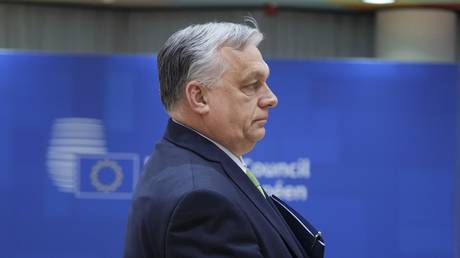 This is not the EU that Hungary joined – Orban
This is not the EU that Hungary joined – Orban
France, Germany, Italy, and Spain requested more technical information about the new measures, Politico noted, citing people present at the closed-door talks.
The push for sanctions on LNG is a significant shift in EU strategy, Politico said. So far, Brussels has refrained from sanctioning supplies.
Russia was once the EU’s leading supplier of pipeline gas, but after the start of the Ukraine conflict, the bloc drastically reduced imports from the country. The share of Russian pipeline gas in EU imports dropped from over 40% in 2021 to around 8% in 2023. EU member states still depend on Russia for their supplies, however. For pipeline gas and LNG combined, Russia accounted for about 15% of total EU gas imports last year, according to European Council data.
Russian LNG continues to flow to the continent mostly through ports in Spain, Belgium, and France. Some of it is then re-exported to countries such as Italy and reportedly Germany.
Hungary has been critical of restrictions on Russia and has opposed EU sanctions packages before, arguing that they hurt the EU itself more than Russia. To be passed, sanctions packages require support from all EU member states.
READ MORE: EU still needs Russian gas – energy watchdog
When reports of potential sanctions on Russian LNG first started circulating last month, Moscow said domestic producers will seek ways to overcome them.
Kremlin spokesman Dimitry Peskov said any restrictions against Russian LNG along with efforts to “squeeze” the country out of energy markets will only lead to higher gas prices for EU consumers.
-
Site: Voltaire NetworkThe United Nations General Assembly adopted by 143 votes in favor to 9 against (Argentina, Czech Republic, Hungary, Israel, Micronesia, Nauru, Palau, Papua New Guinea and the United States) and 25 abstentions a resolution , calling on the Security Council to revise its position on the full membership of Palestine. The resolution provides for the following additional rights: the right to sit among the Member States in alphabetical order; the right to table proposals and amendments, to (...)
-
Site: Zero HedgeTransitioning Fleet Trucks To Electric Raises Costs By Up To 114 Percent, Report WarnsTyler Durden Tue, 05/14/2024 - 05:45
Authored by Naveen Athrappully via The Epoch Times (emphasis ours),
Transitioning conventional truck fleets to electric vehicles (EVs) pushes up annual operational costs, which subsequently increases economic inflation, according to a recent report from transportation and logistics firm Ryder.
Florida-based Ryder analyzed the potential cost of transportation if internal combustion engine trucks are converted to EVs. There is a 5 percent cost increase for light-duty EVs and a 94–114 percent increase for heavy-duty trucks, the May 8 report states. For a fleet of 25 mixed vehicles—light-, medium-, and heavy-duty trucks—costs surge by 56–67 percent.
As transportation costs have a direct bearing on the price of goods sold in markets across the country, Ryder estimates such increases to eventually add about 0.5–1 percent to overall price inflation in the economy.
“There are specific applications where EV adoption makes sense today, but the use cases are still limited. Yet we’re facing regulations aimed at accelerating broader EV adoption when the technology and infrastructure are still developing,” said Karen Jones, executive vice president and head of new product development for Ryder.
“Until the gap in TCT [total cost to transport] for heavier duty vehicles is narrowed or closed, we cannot expect many companies to make the transition; and, if required to convert in today’s market, we face more supply chain disruptions, transportation cost increases, and additional inflationary pressure.”
In California, the annual TCT increase for a heavy-duty EV tractor was approximately $315,000, with the number rising to more than $330,000 in Georgia. In both cases, equipment costs were the biggest contributor to the increase, rising by 500 percent.
Ryder noted there were 16.4 million Class 3 to Class 8 commercial vehicles in operation in the United States, out of which only an estimated 18,000 EVs have been deployed.
“Therefore, if companies are required to convert to EVs in the near future, availability and production of EVs may be far less than the vehicles needed to run America’s supply chains,” the report states.
The report points to a statement made by Clean Freight Coalition (CFC) that there is currently no network in the United States where truck drivers can take rest breaks and charge their EV batteries at the same time.
CFC estimates that electrifying the United States’ current commercial vehicle fleet would necessitate a $1 trillion investment.
Moreover, the International Council on Clean Transportation calculates that almost 700,000 chargers will be required to accommodate the 1 million Class 4, 6, and 8 electric trucks expected to be deployed by 2030. This alone will consume 140,000 megawatts of electricity per day, which is equivalent to the daily electricity needs of roughly 5 million U.S. homes.
“Ryder’s analysis underscores the reasons EV adoption for commercial vehicles remains in its infancy. In addition to the limited support infrastructure and EV availability, the business case for converting to EV for most payload and mileage applications, is extremely challenging,” the report reads.
Robert Sanchez, chairman and CEO of Ryder, said that although the company is actively deploying EVs and charging infrastructure, it has not seen any “significant adoption” of this technology.
“For many of our customers, the business case for converting to EV technology just isn’t there yet, given the limitations of the technology and lack of sufficient charging infrastructure,” he said.
Stuttering EV Adoption
The Ryder report comes as the Biden administration announced last month that it plans to spend nearly $1.5 billion to make the U.S. freight industry “zero-emissions.”
As part of the program, the Environmental Protection Agency (EPA) will offer $1 billion from the Inflation Reduction Act to cities and states “to replace Class 6 and Class 7 heavy-duty vehicles—which include school buses, trash trucks, and delivery trucks—with zero-emissions vehicles,” the White House said.
“Freight movement continues to represent a significant share of local air pollution, increasing the risk of asthma, heart disease, hospitalization, and other adverse health outcomes for the millions of Americans, especially overburdened communities, who live and work near highways, ports, railyards, warehouses, and other freight routes,” it stated.
The goal to transition to a zero-emissions freight sector “will prioritize actions to address air pollution hot spots and tackle the climate crisis, mobilizing a broad range of government resources, and reflect public participation and meaningful community engagement, furthering the President’s commitment to environmental justice for all.”
A recent report from consulting firm Roland Berger noted that full electrification of the U.S. commercial truck fleet would be an expensive affair. The cost of new electric trucks is twice or three times that of their diesel equivalents. A diesel Class 8 truck costs about $180,000, and a battery-electric truck costs more than $400,000.
Earlier, the EPA finalized the “strongest ever” greenhouse gas standards for heavy-duty vehicles, a move that attracted strong criticism from trucking organizations.
The Owner-Operator Independent Drivers Association called the standards an “assault on small-business truck drivers,” who make up 96 percent of commercial motor carriers.
On April 30, Nick Nigro, the founder of Atlas Public Policy, testified at a House hearing on fleet electrification efforts, supporting such initiatives. He insisted that such a transition is crucial to protect people’s health.
“We aren’t just racing against foreign nations to lead the development of 21st-century vehicle technology,“ he said. ”We’re also in a race to mitigate the worst effects of climate change on the planet and tailpipe pollution on human health.”
The American Lung Association estimates that transitioning to zero-emission trucks could result in $735 billion in public health benefits by 2050, he noted.
In his testimony at the hearing, Taki Darakos, the vice president of vehicle maintenance and fleet service at PITT OHIO, raised concerns about the high costs involved in electrifying fleets.
The upfront costs of zero-emission vehicles (ZEV) “are much higher than their diesel equivalent, making it difficult for fleets to embrace electrification until they see meaningful year-over-year upfront purchase price declines.”
The company incorporated some EVs in its fleet, and Mr. Darakos said: “Increased vehicle weight from the batteries reduced our payload and limited our usage of haul. These limitations have impacted the company’s timeline on how and when to transition to ZEV.”
The American Transportation Research Institute estimated that electrifying the entire vehicle fleet in the United States will consume 40 percent of the United States’ existing electricity generation while requiring a 14 percent overall increase in energy generation.
“Yet our aging grid can hardly meet current demands,“ Mr. Darakos said. ”In California, where rolling blackouts and brownouts are not uncommon, utilities would need to generate an additional 57 percent beyond their current output to support an electric vehicle fleet.”
He pointed out that a truck driver can refuel a new diesel truck within 15 minutes for a journey of up to 1,200 miles. However, charging an EV truck for two hours provides a range of only about 200 miles.

